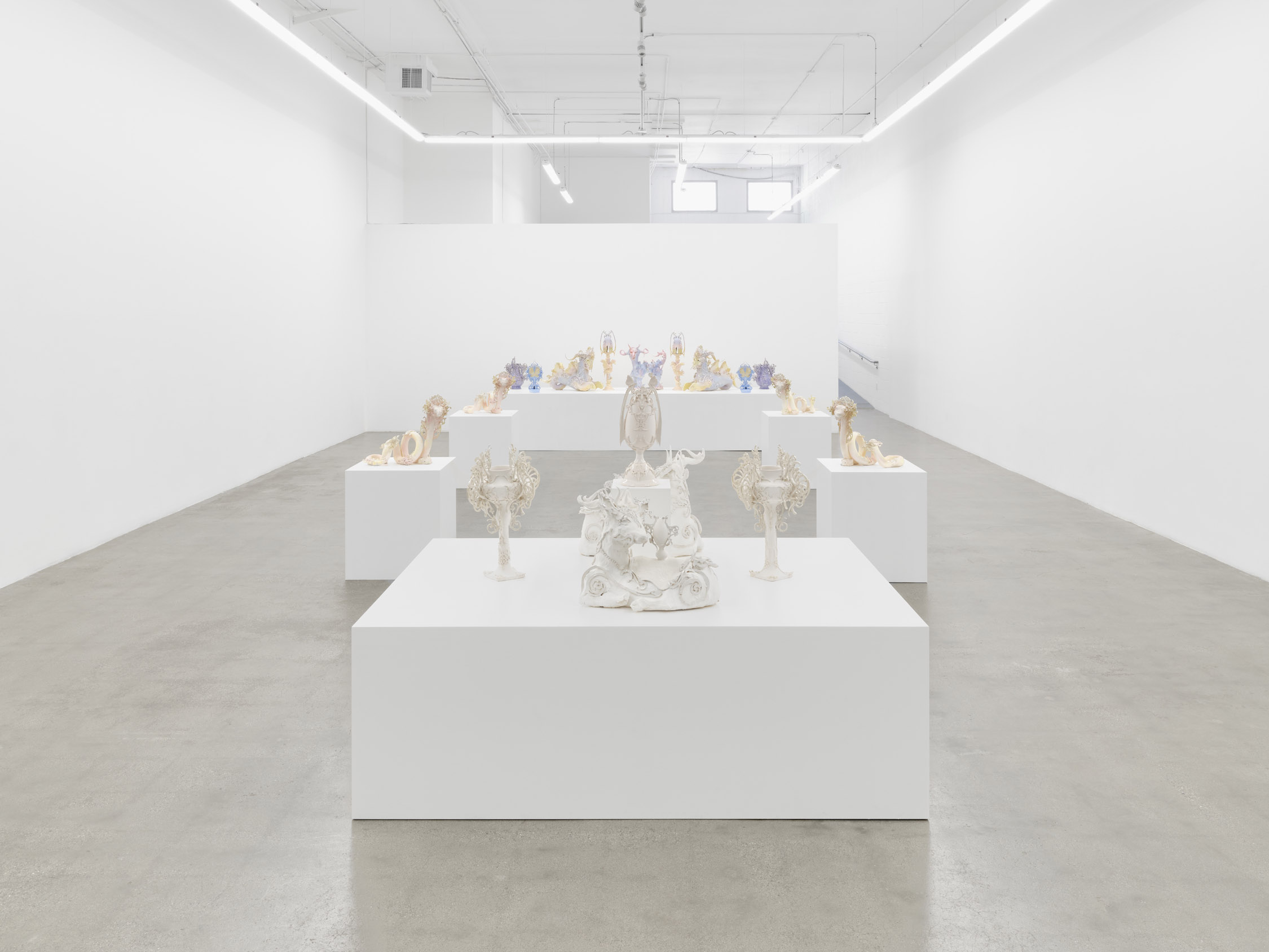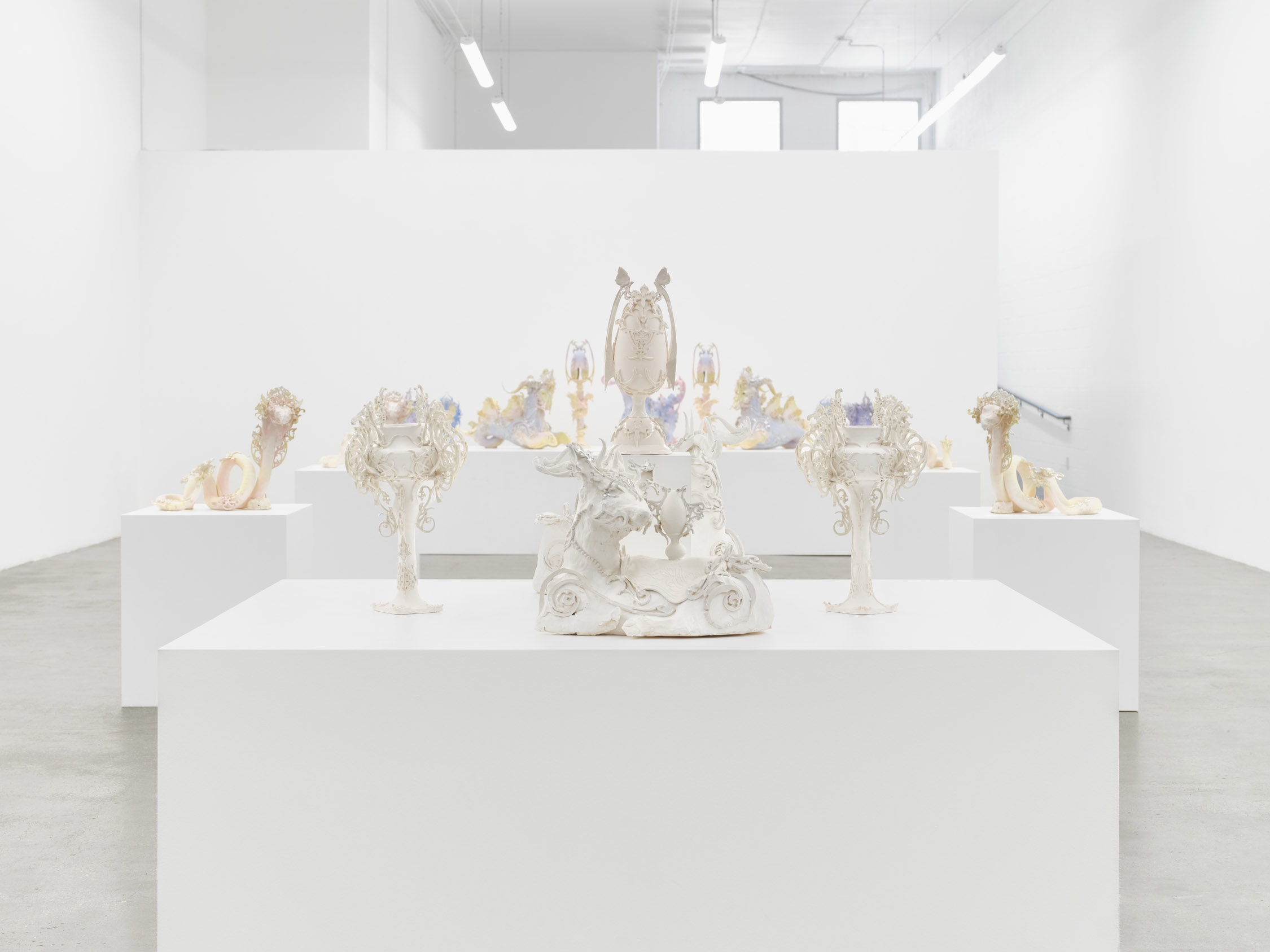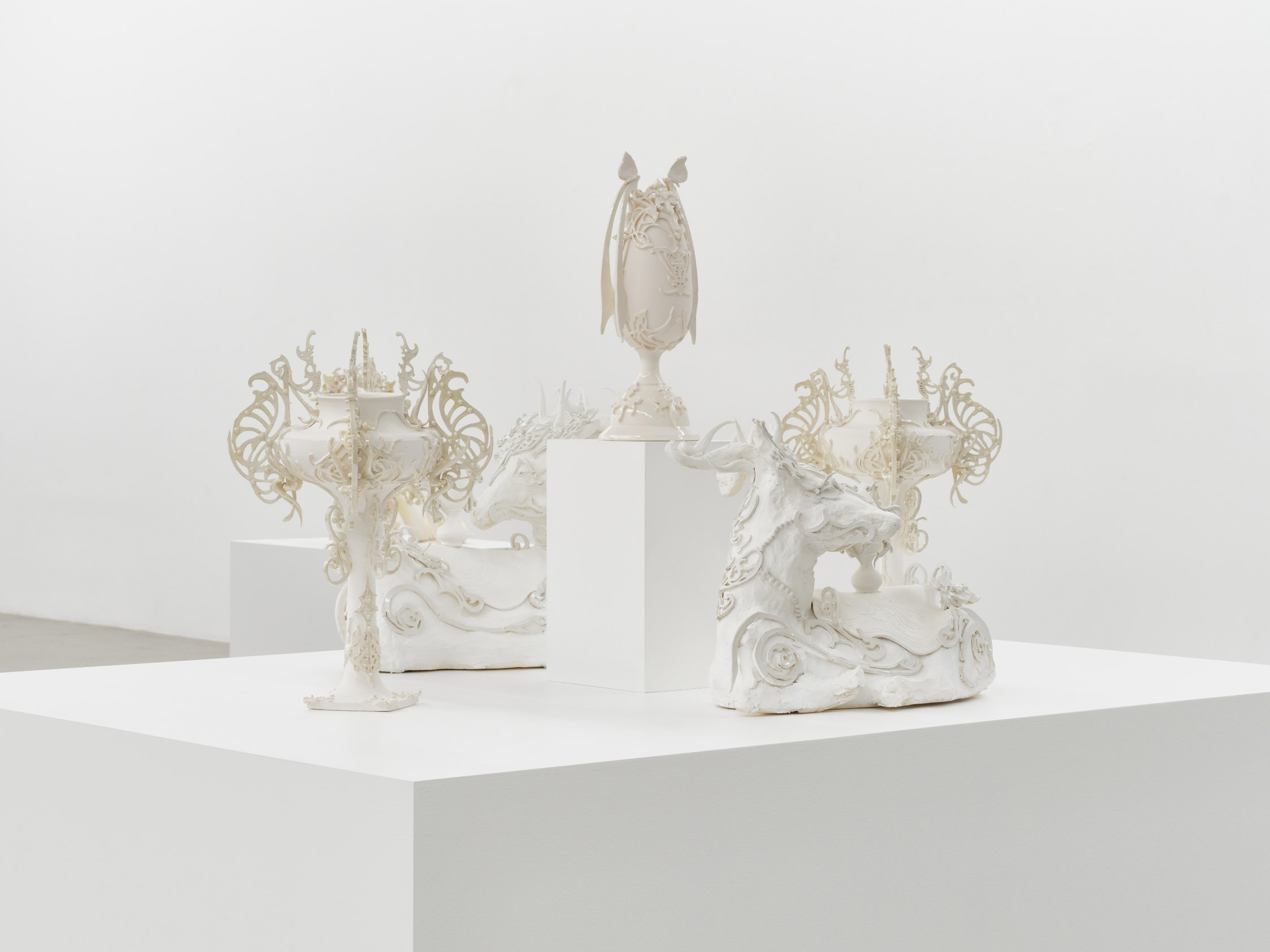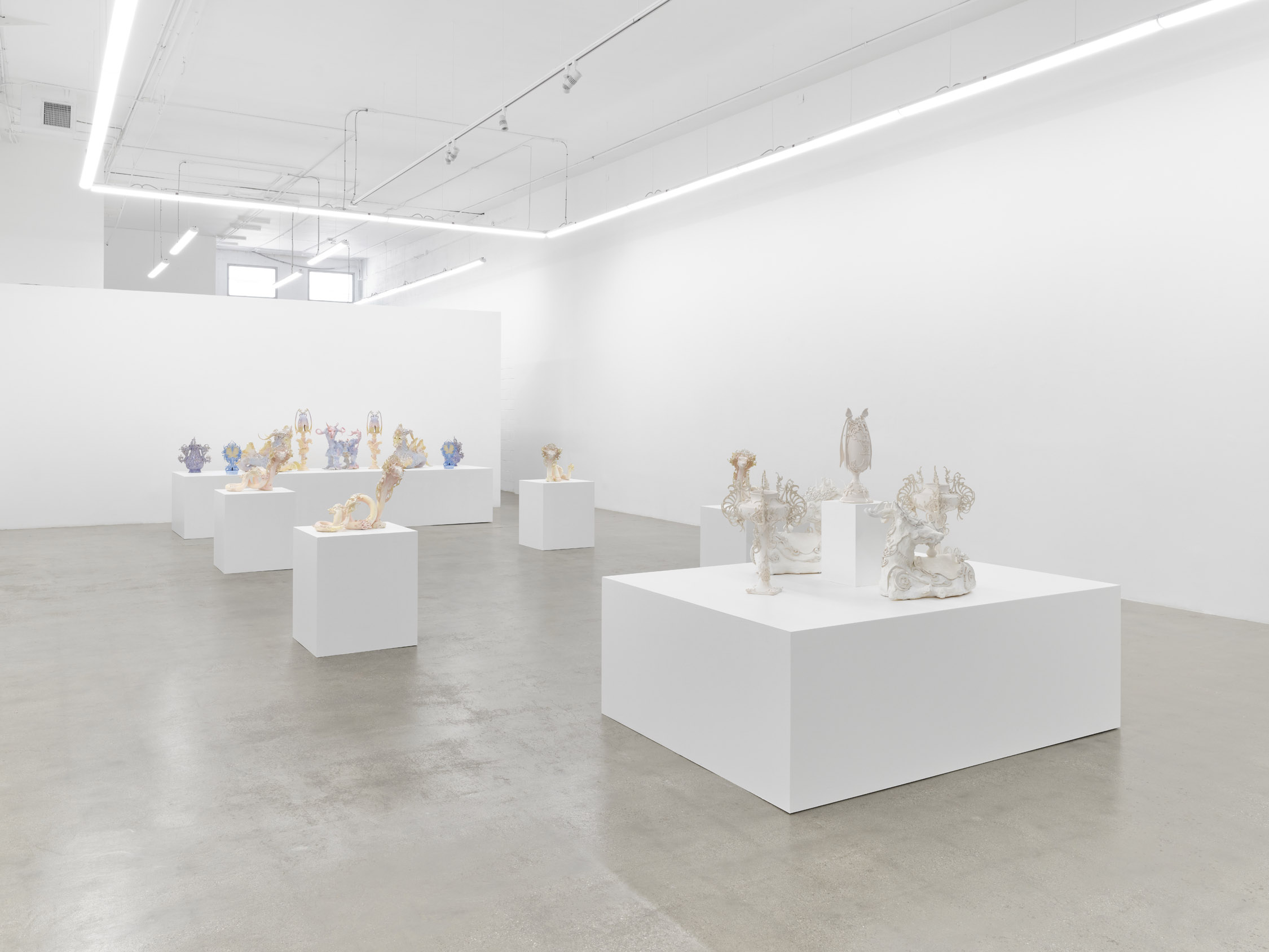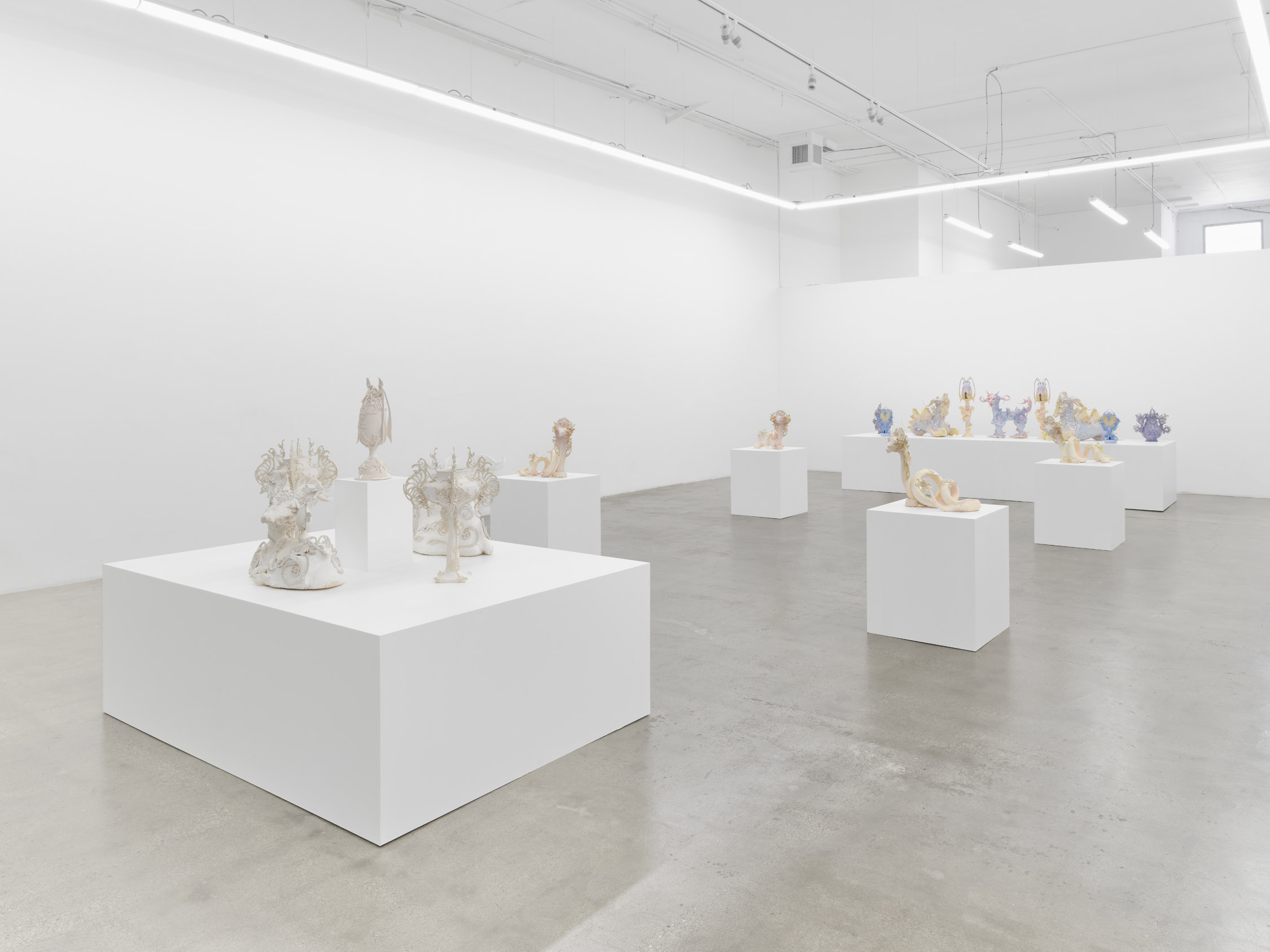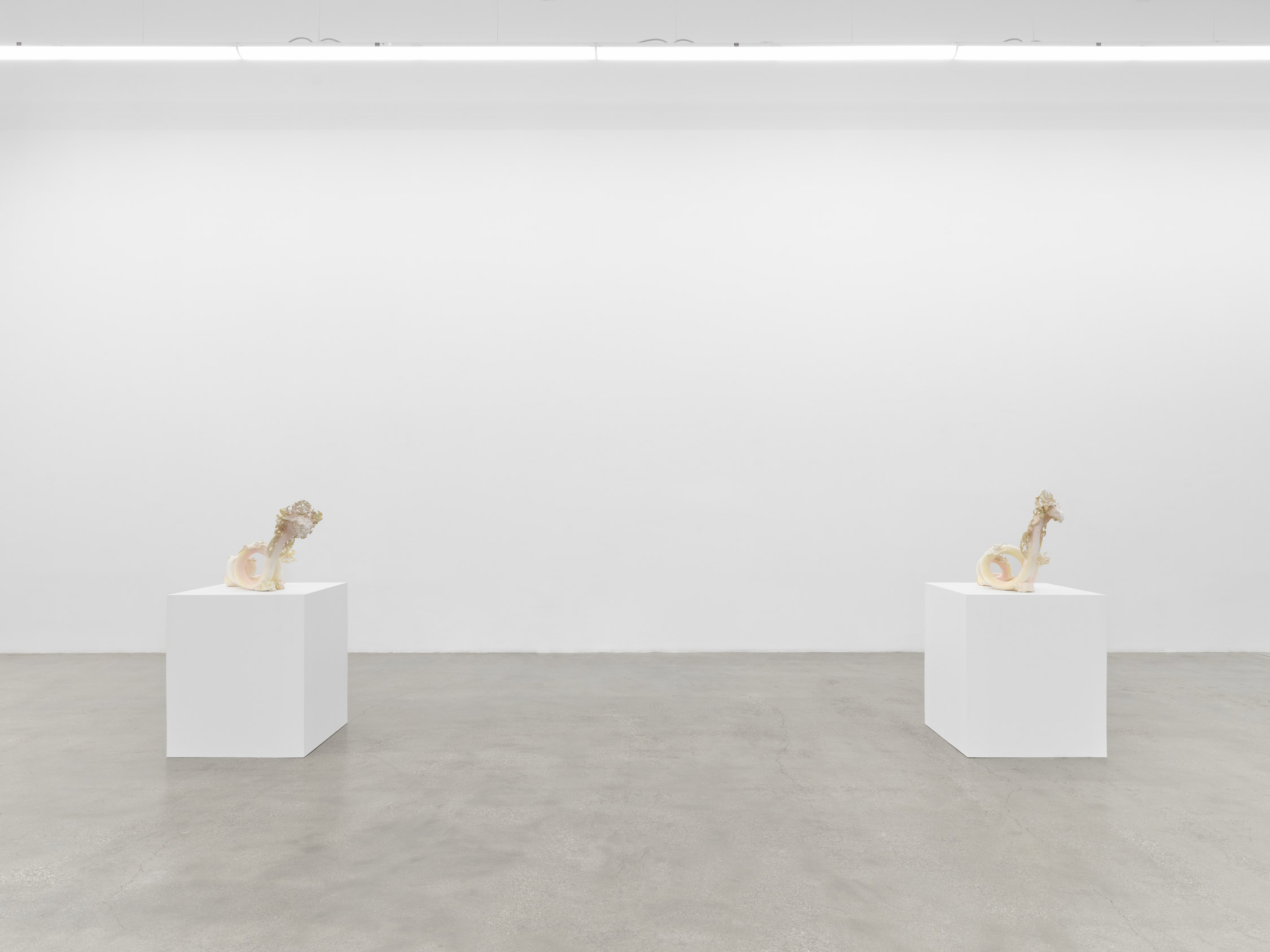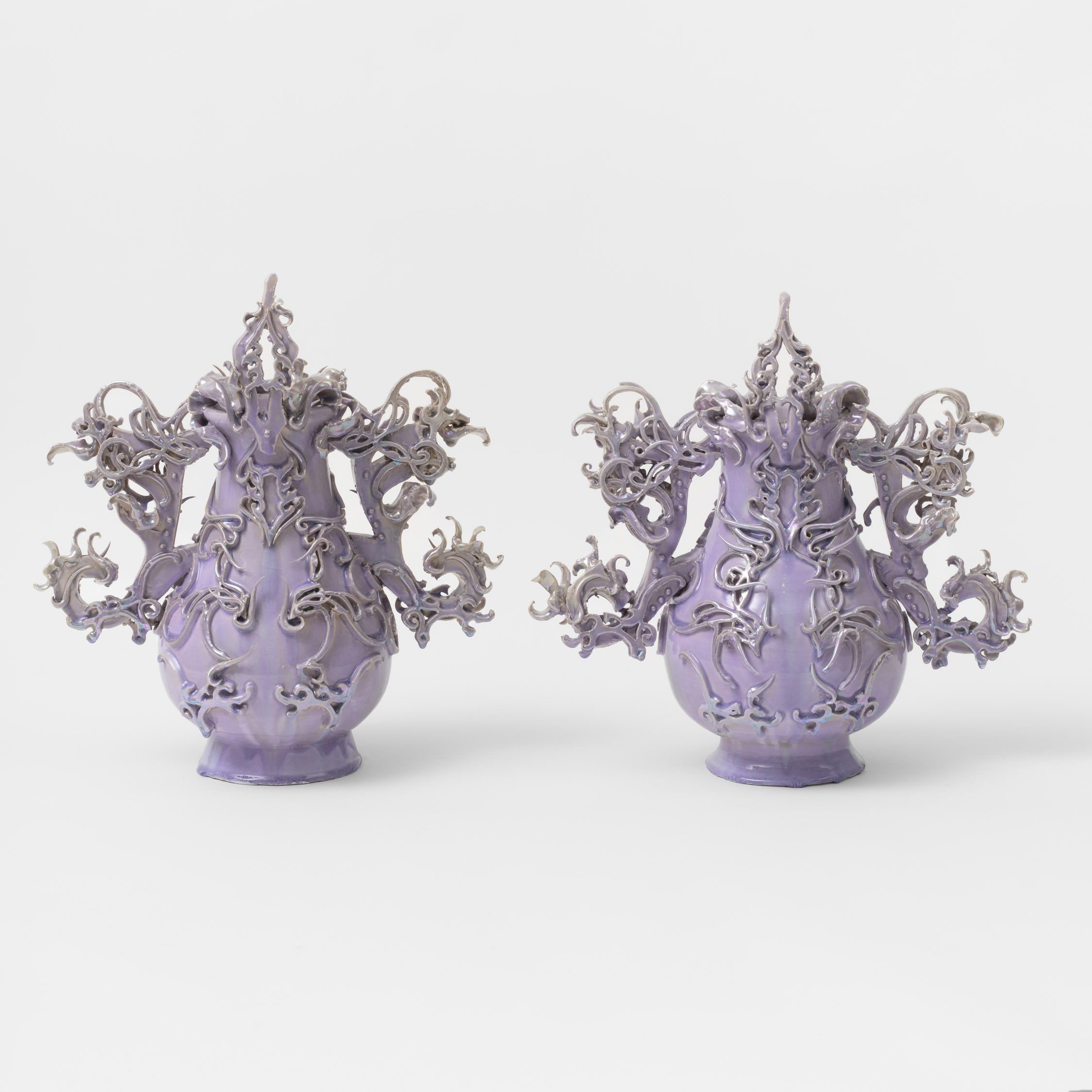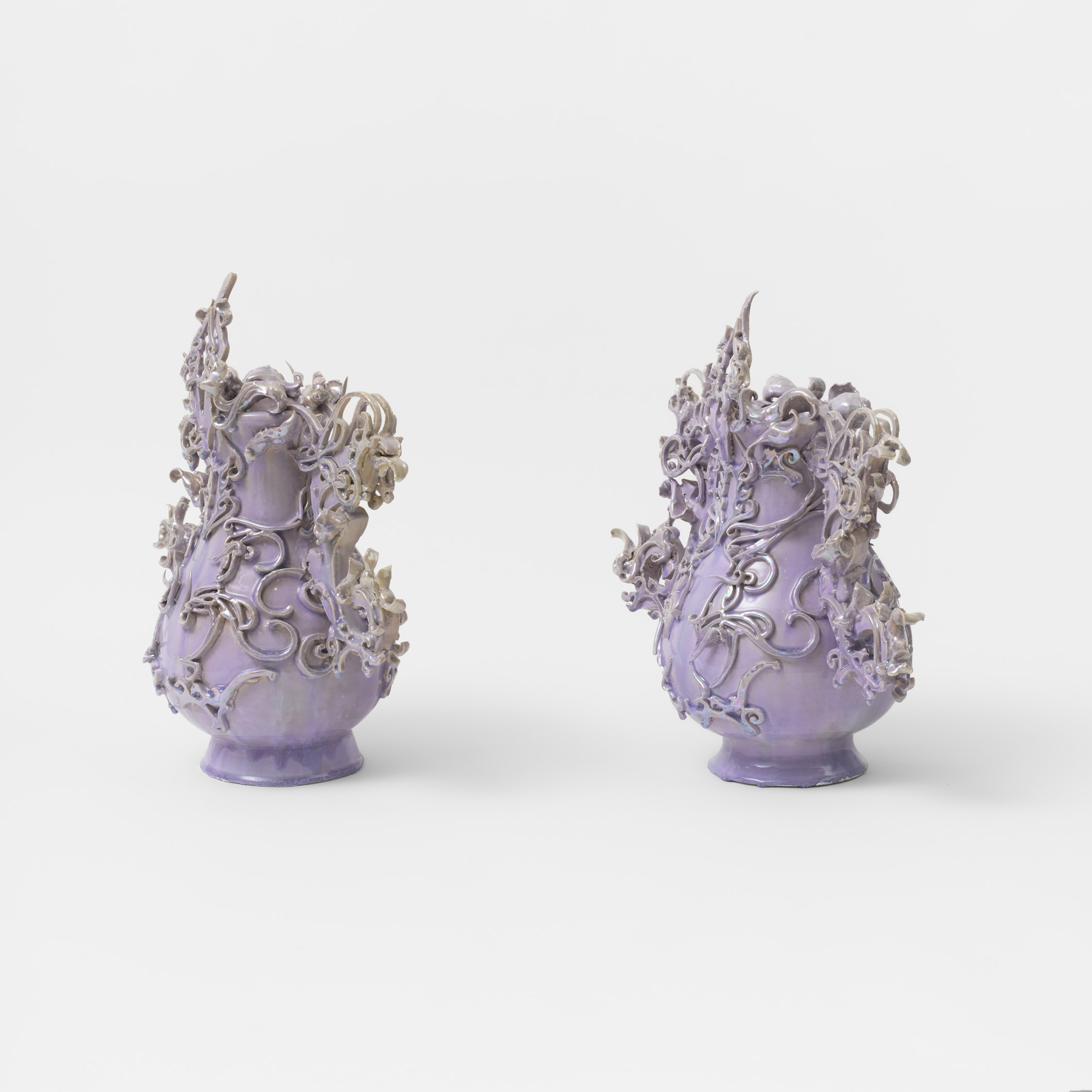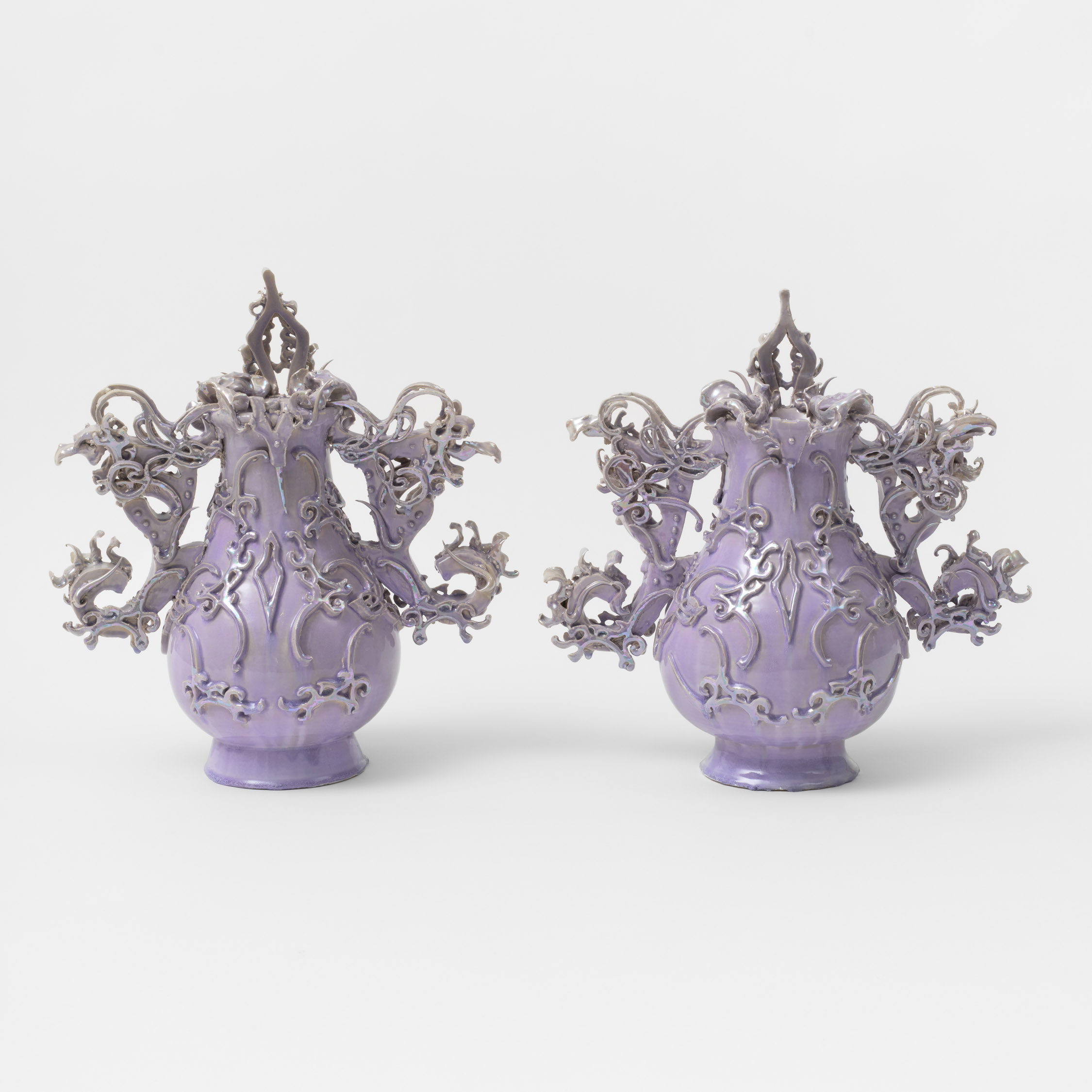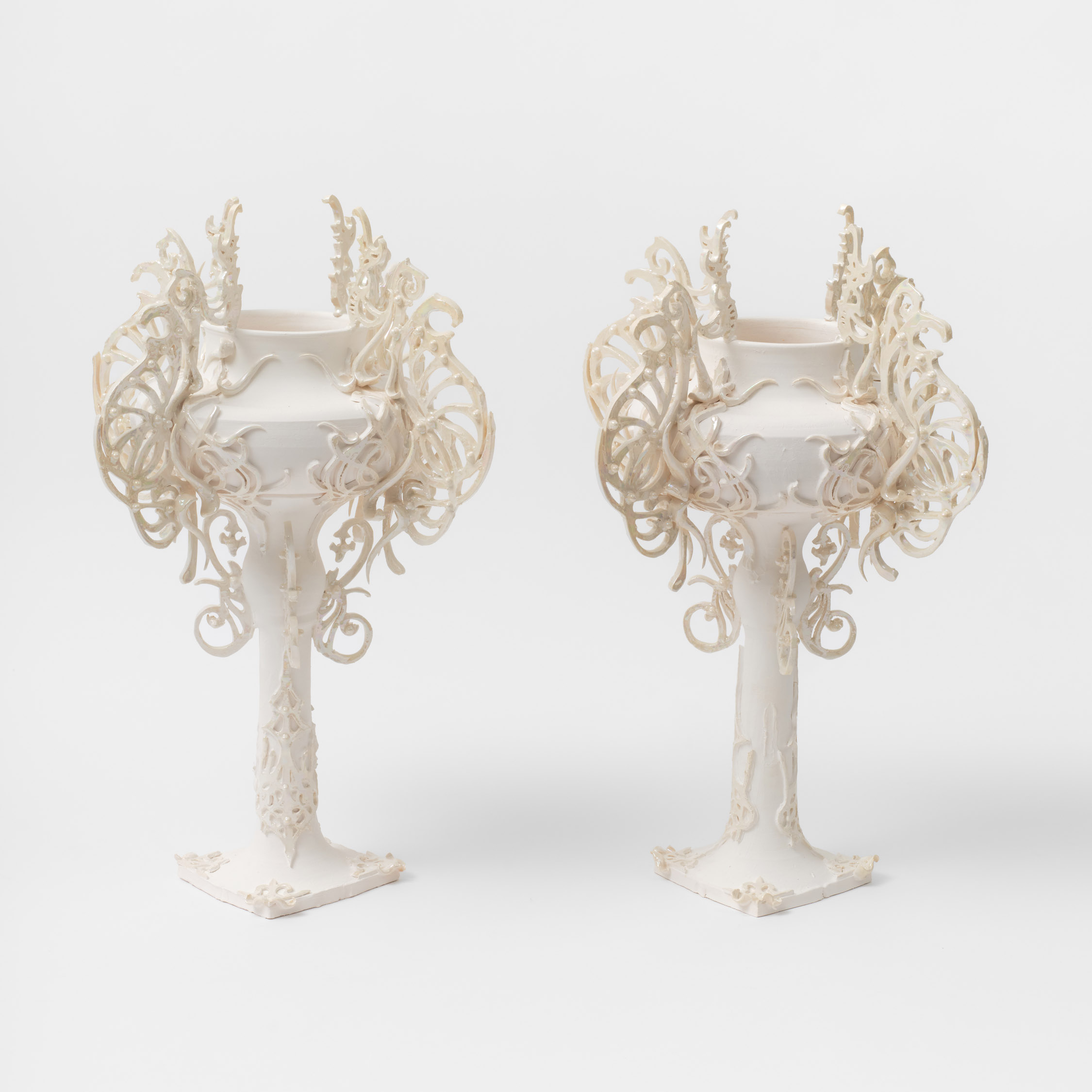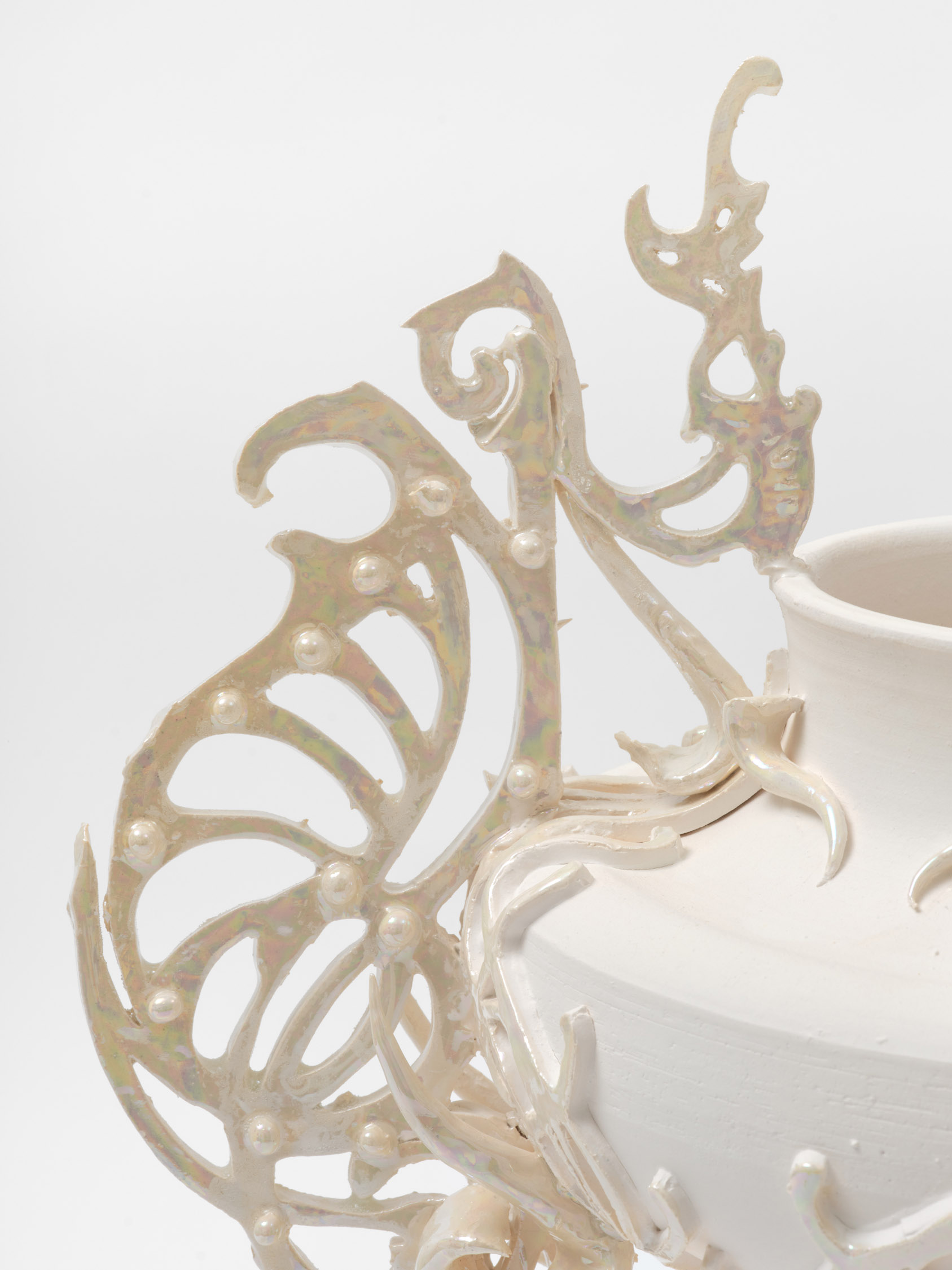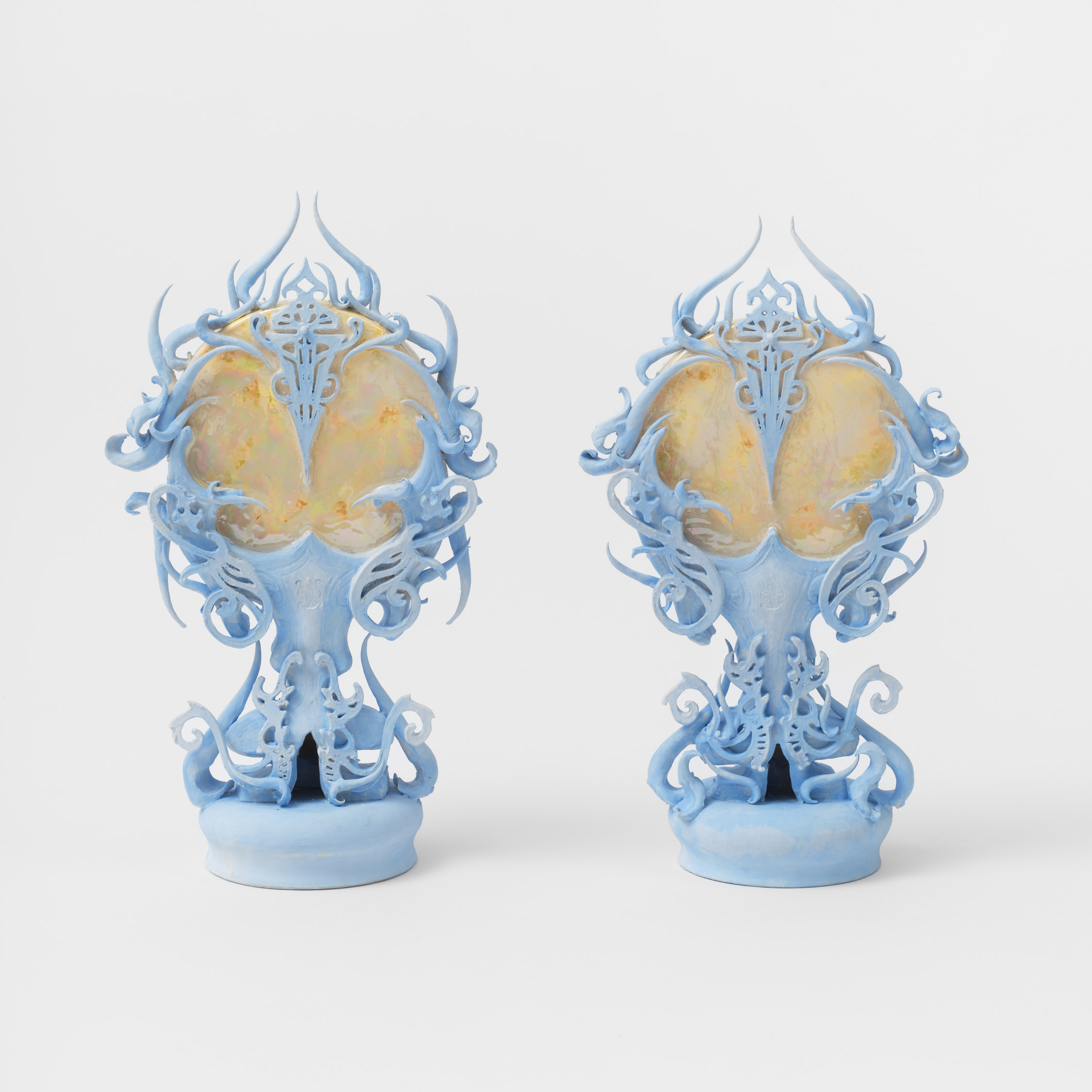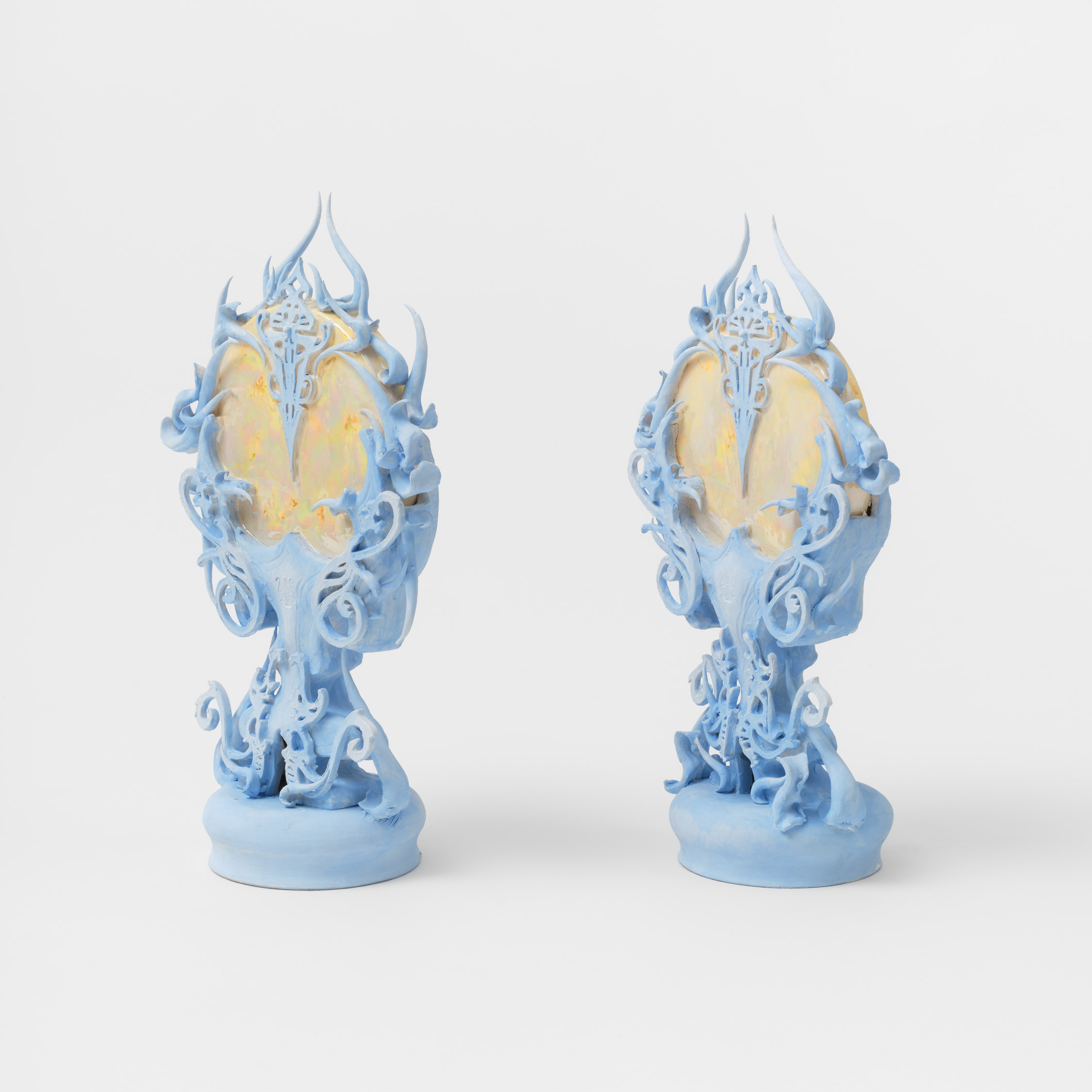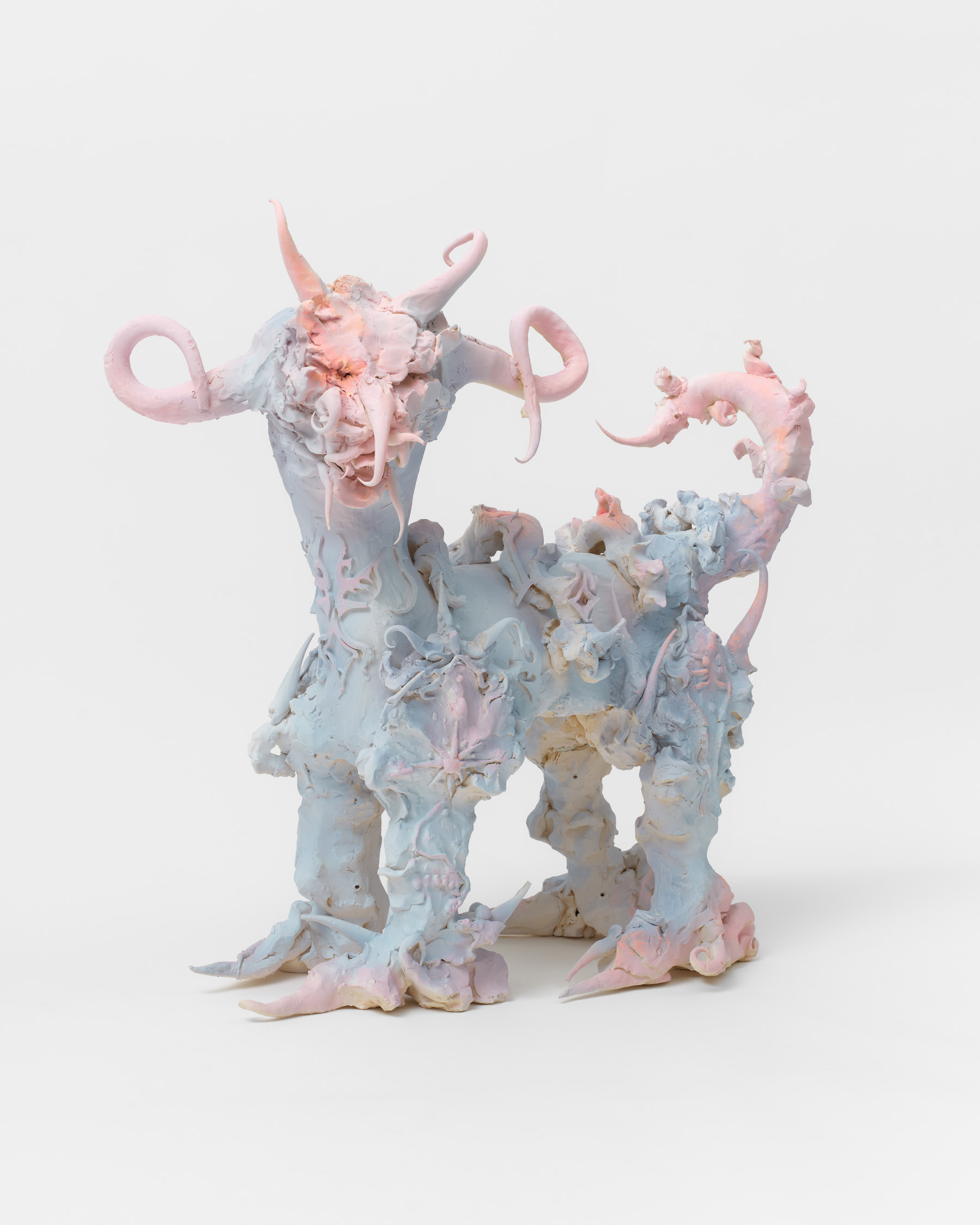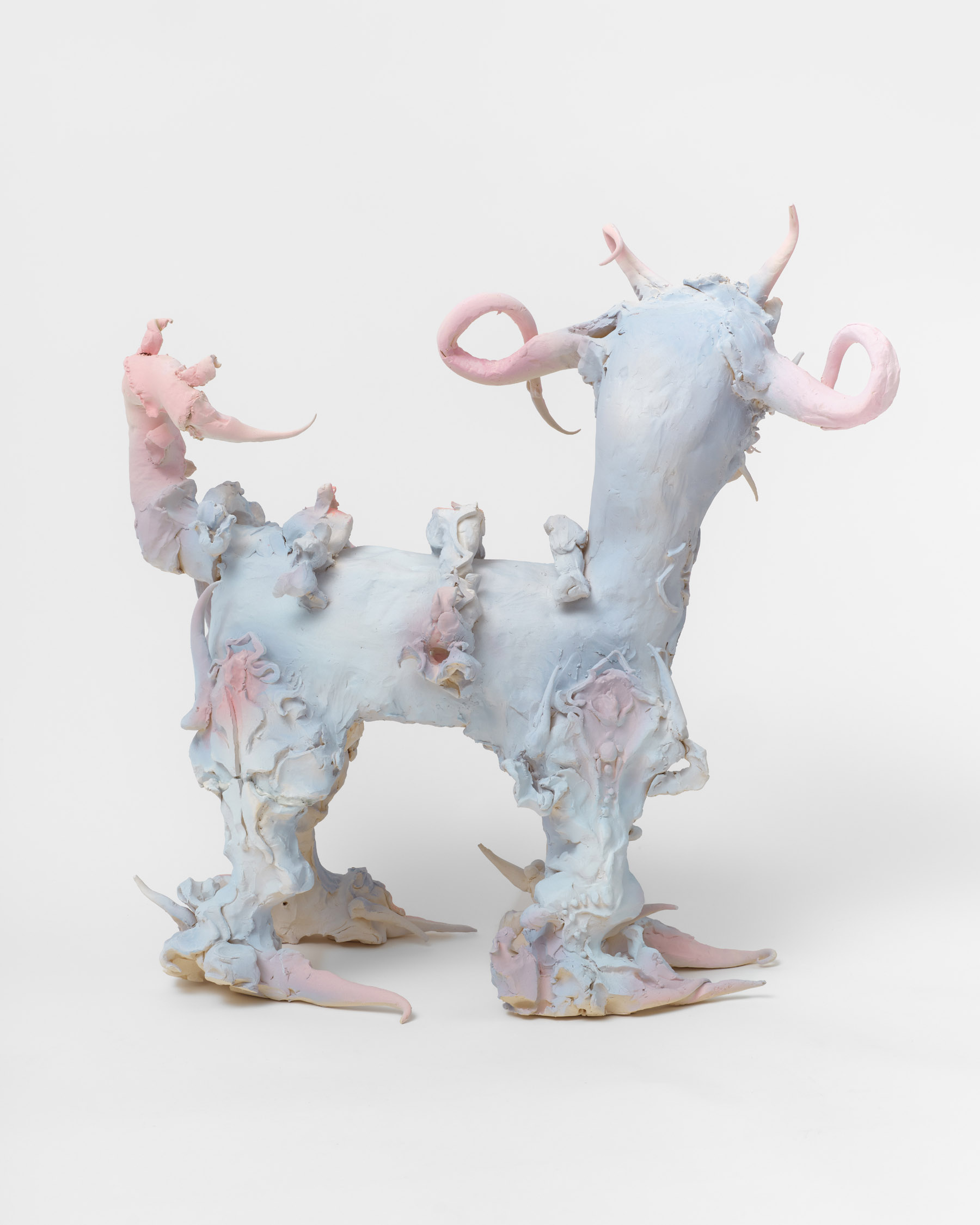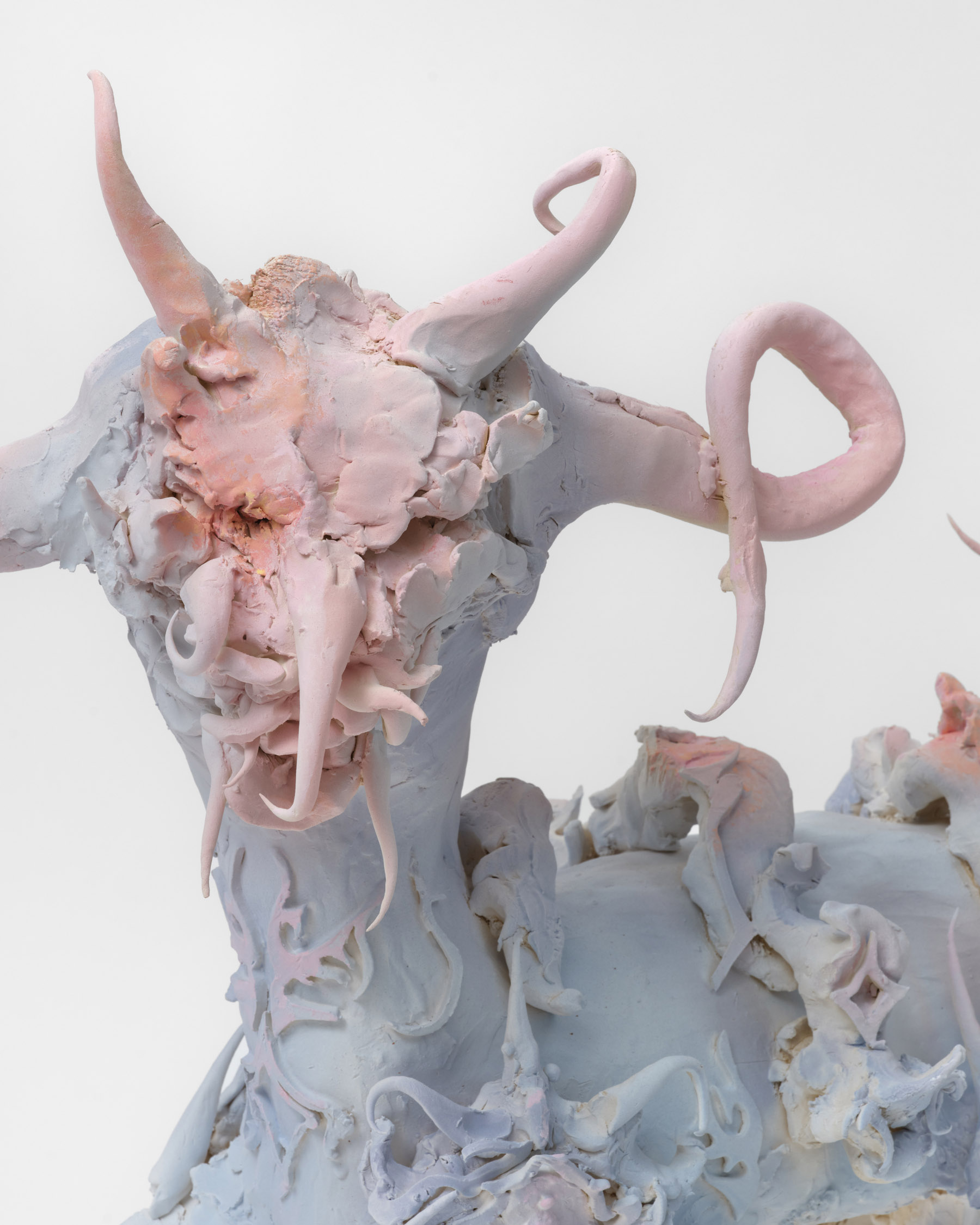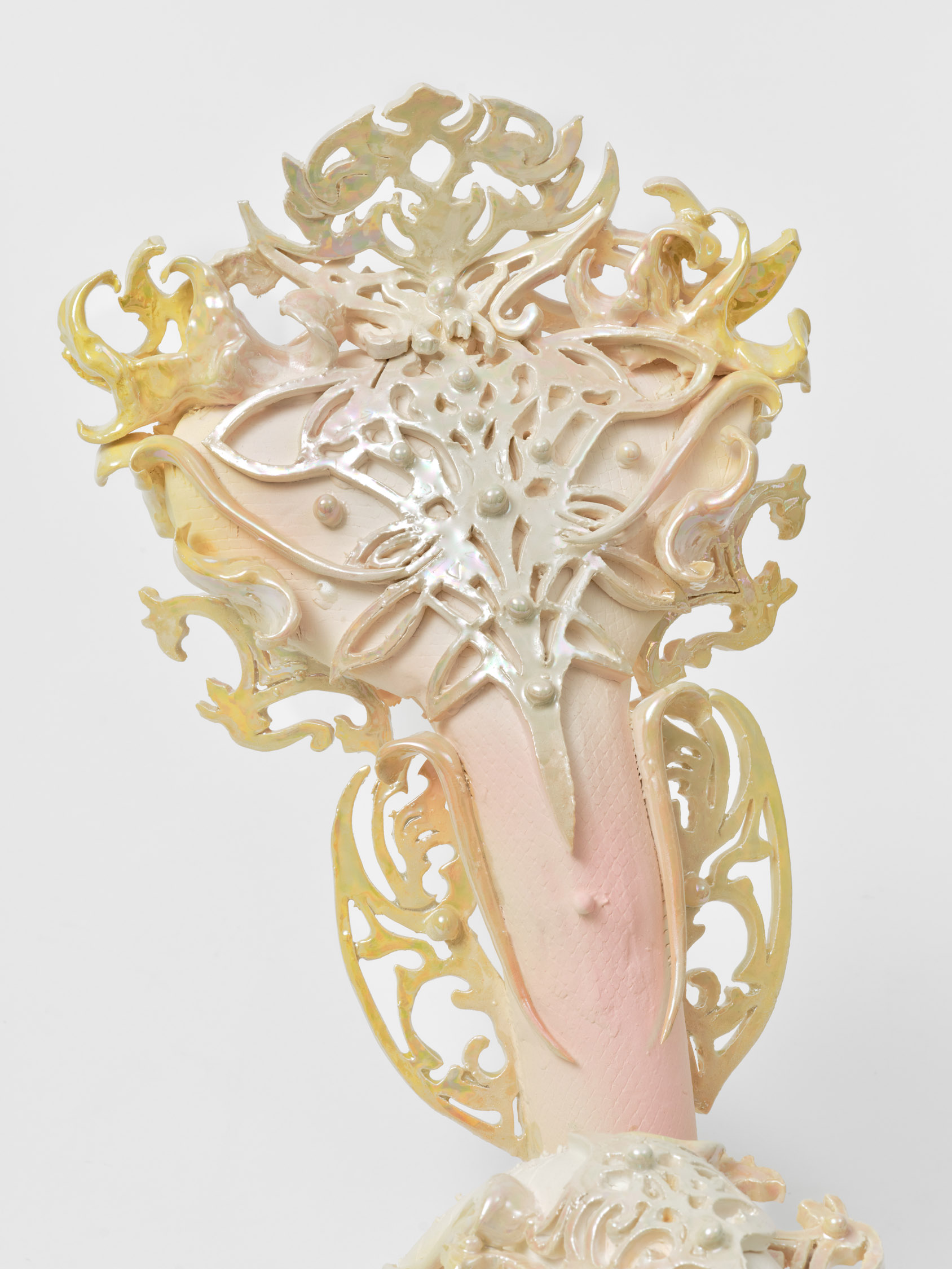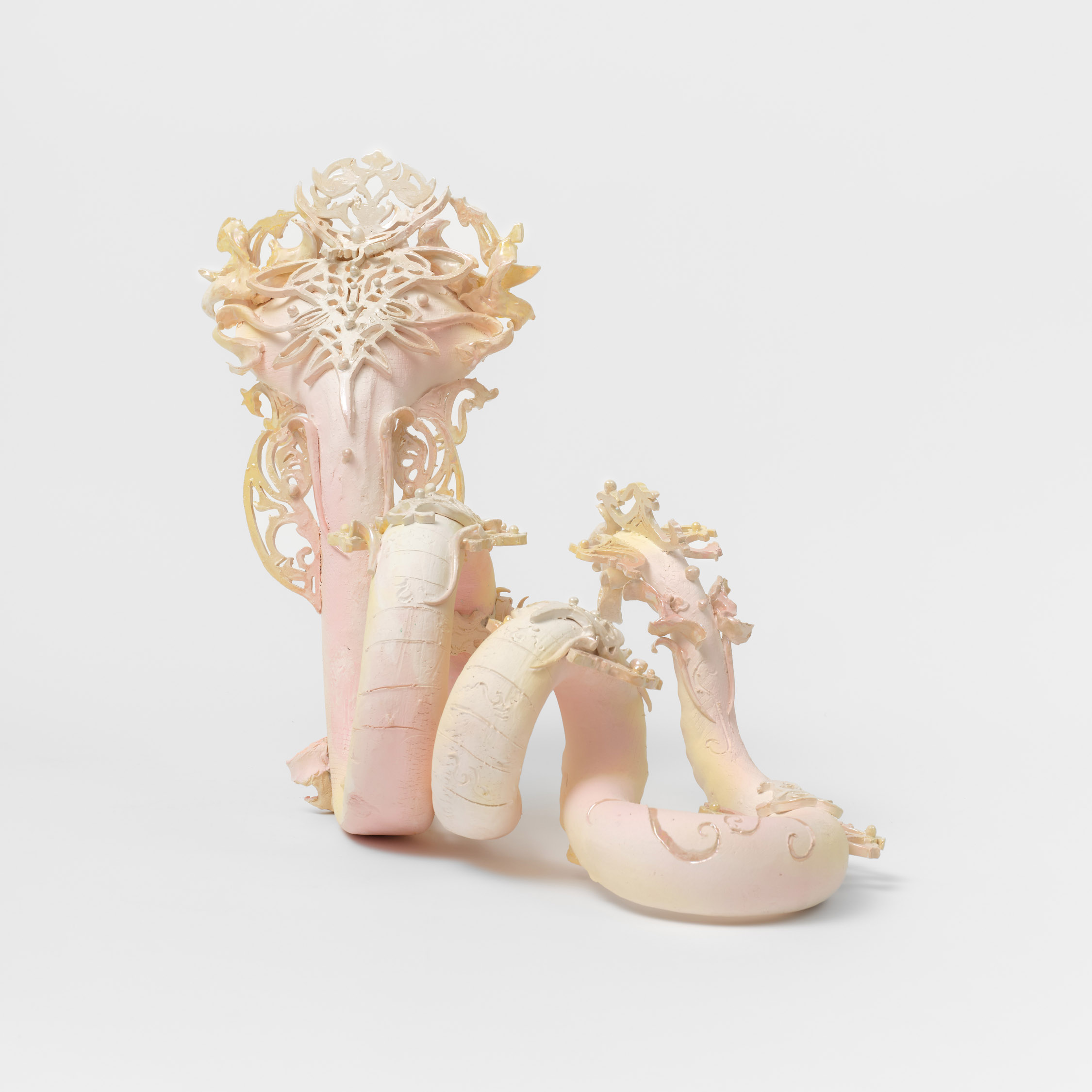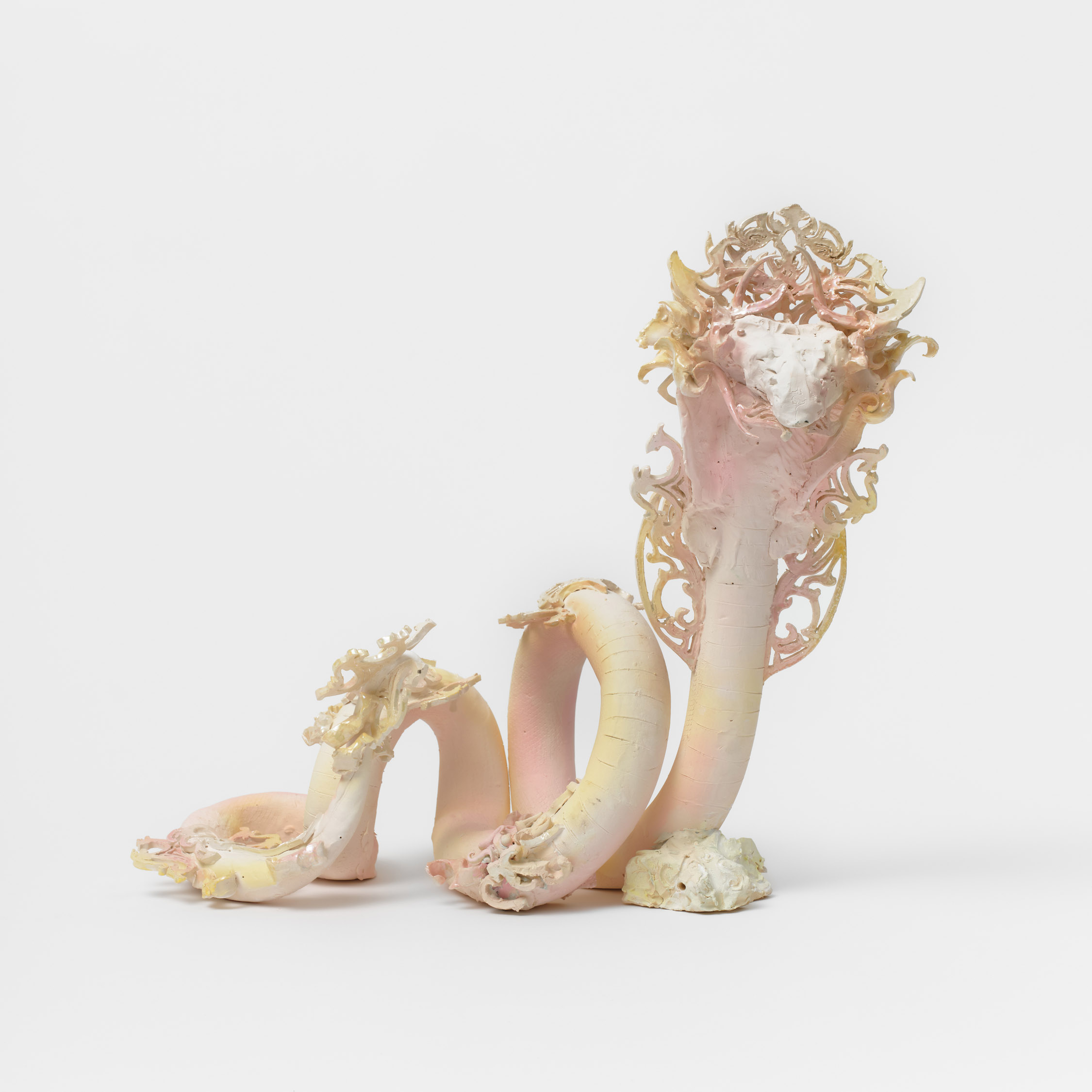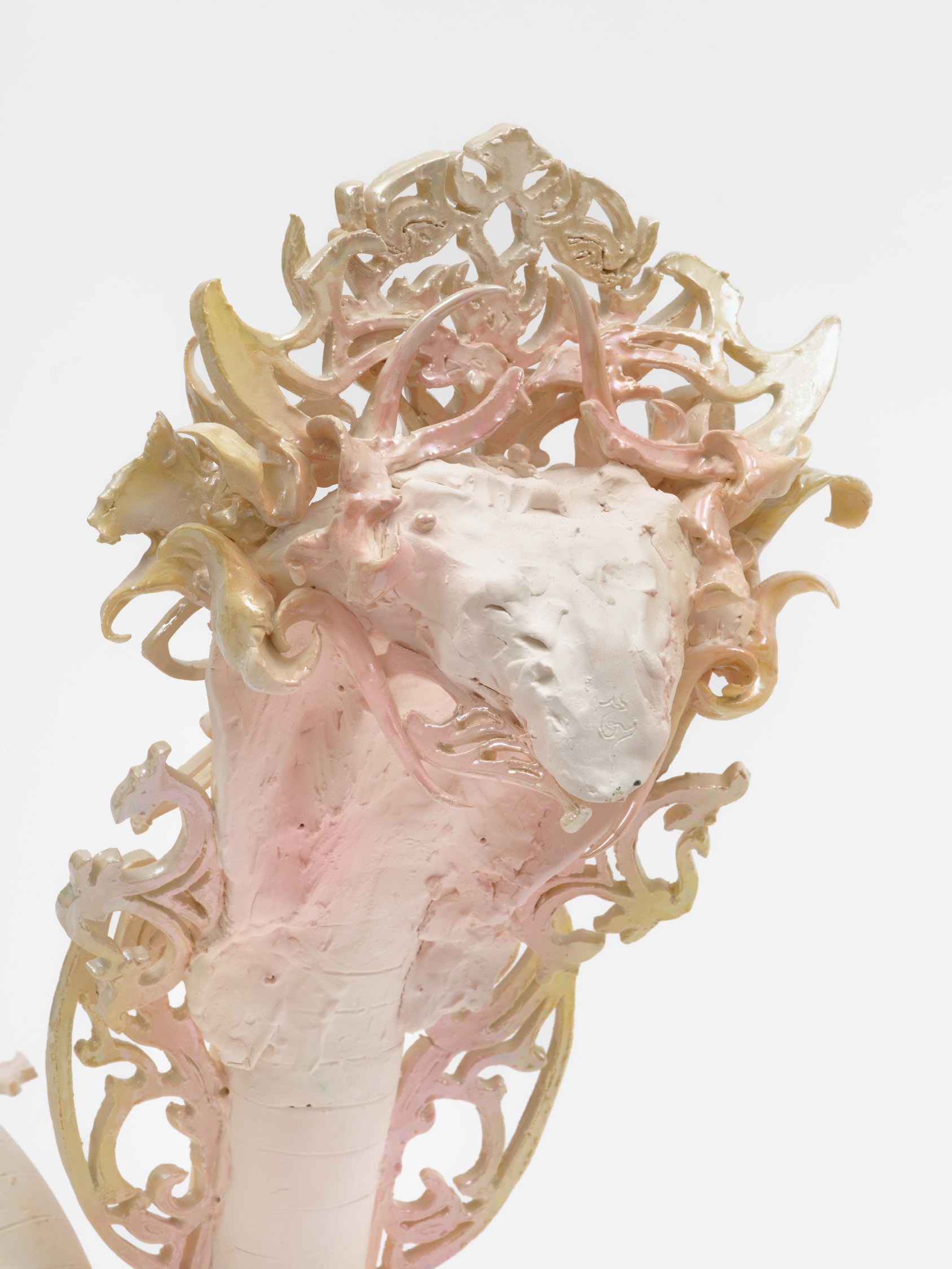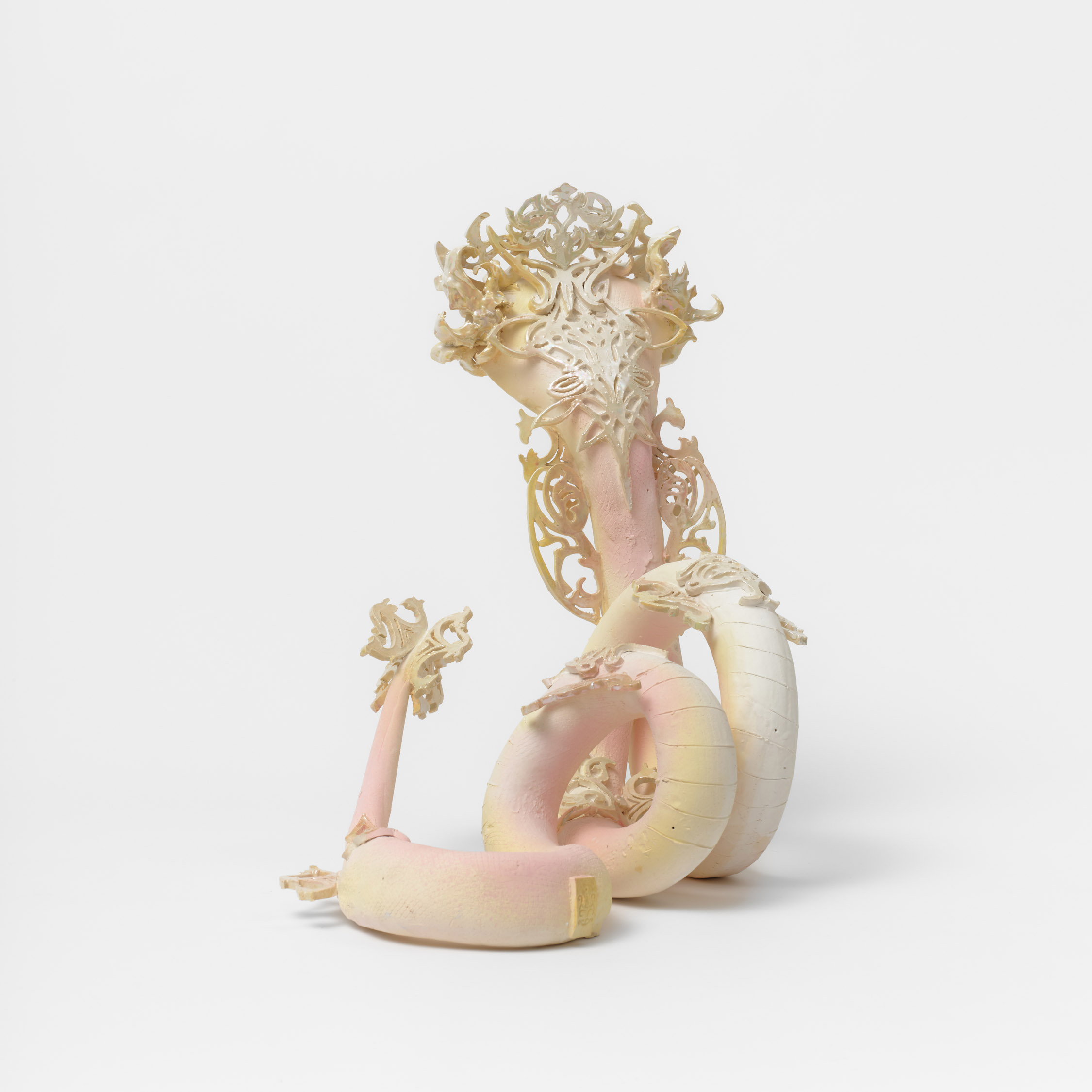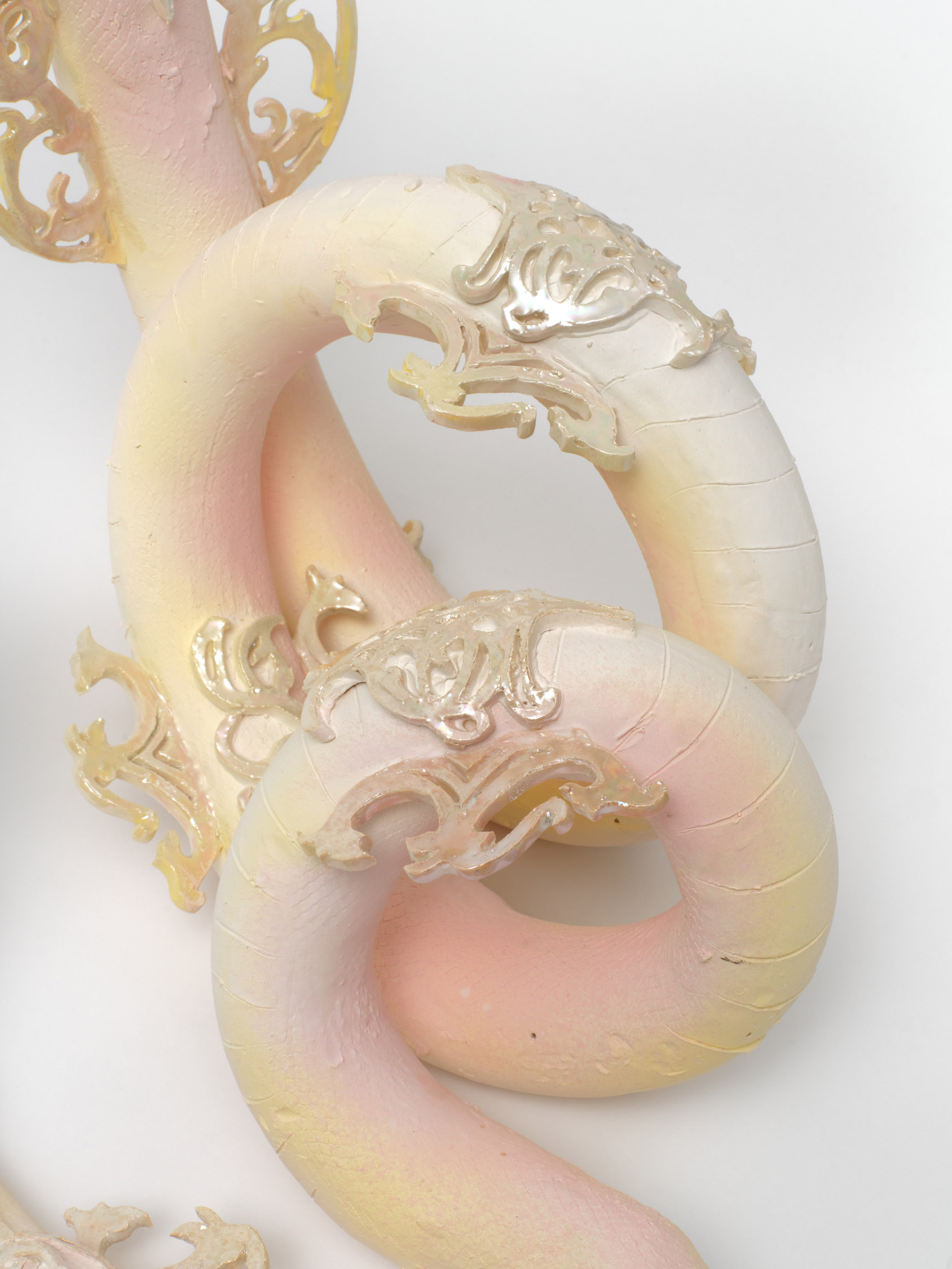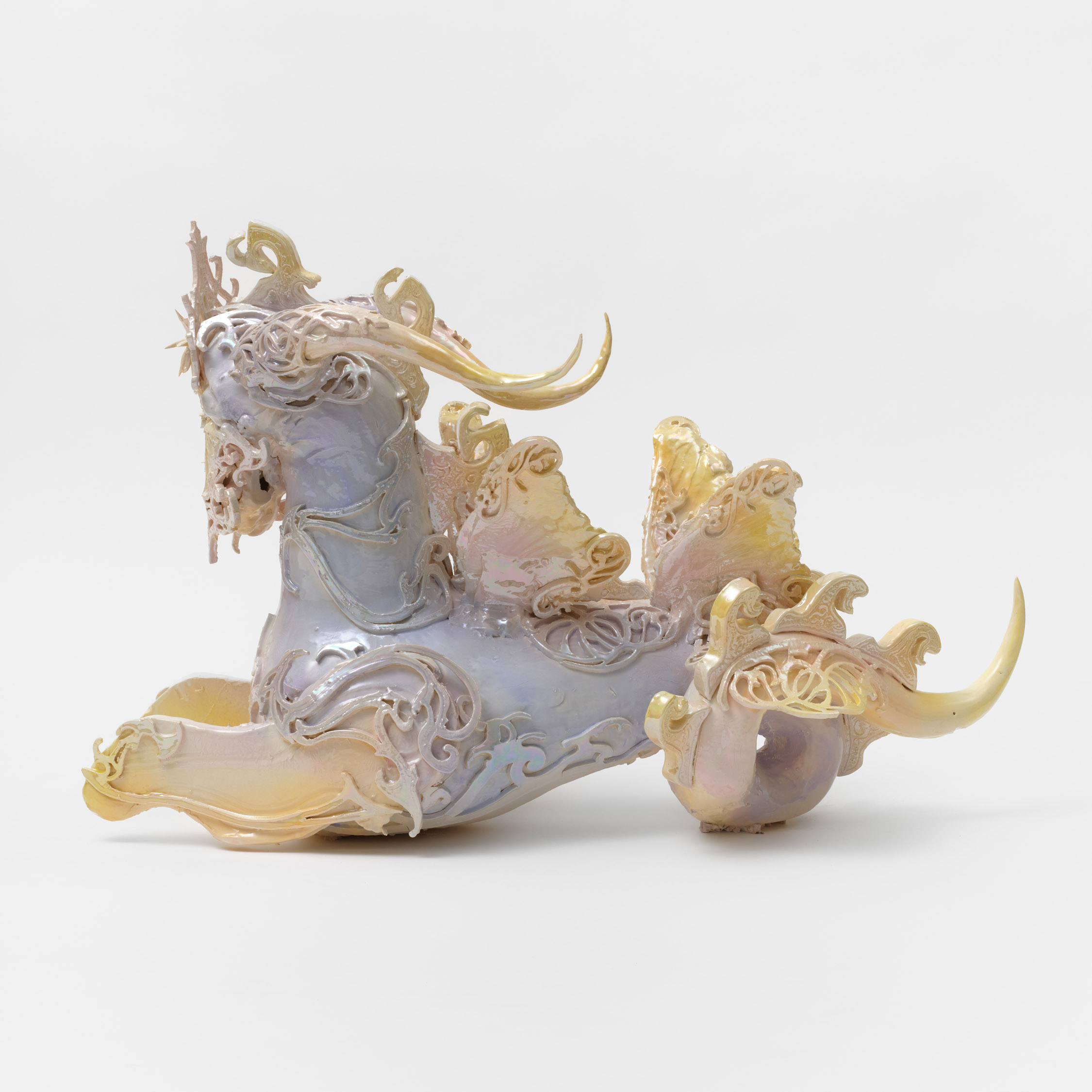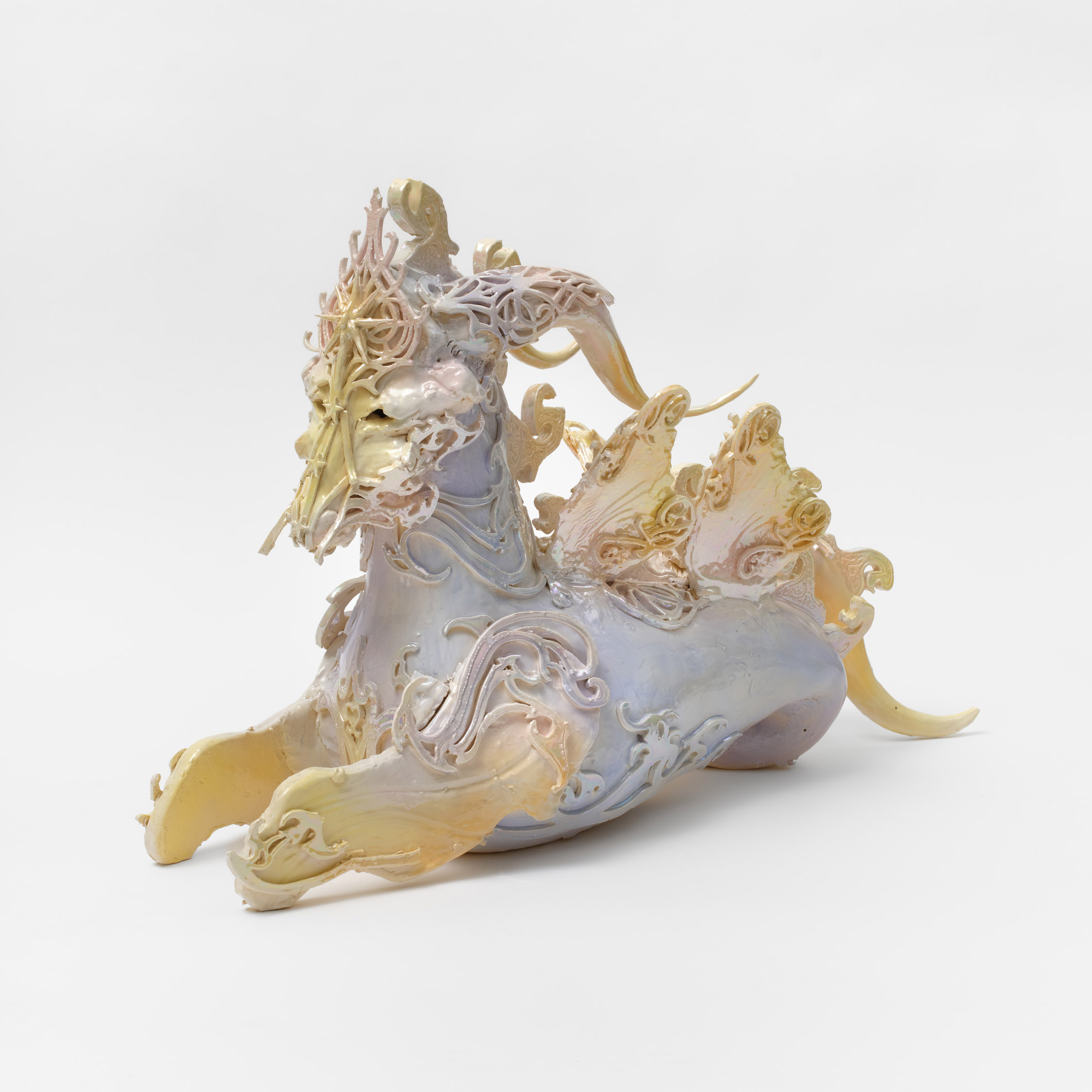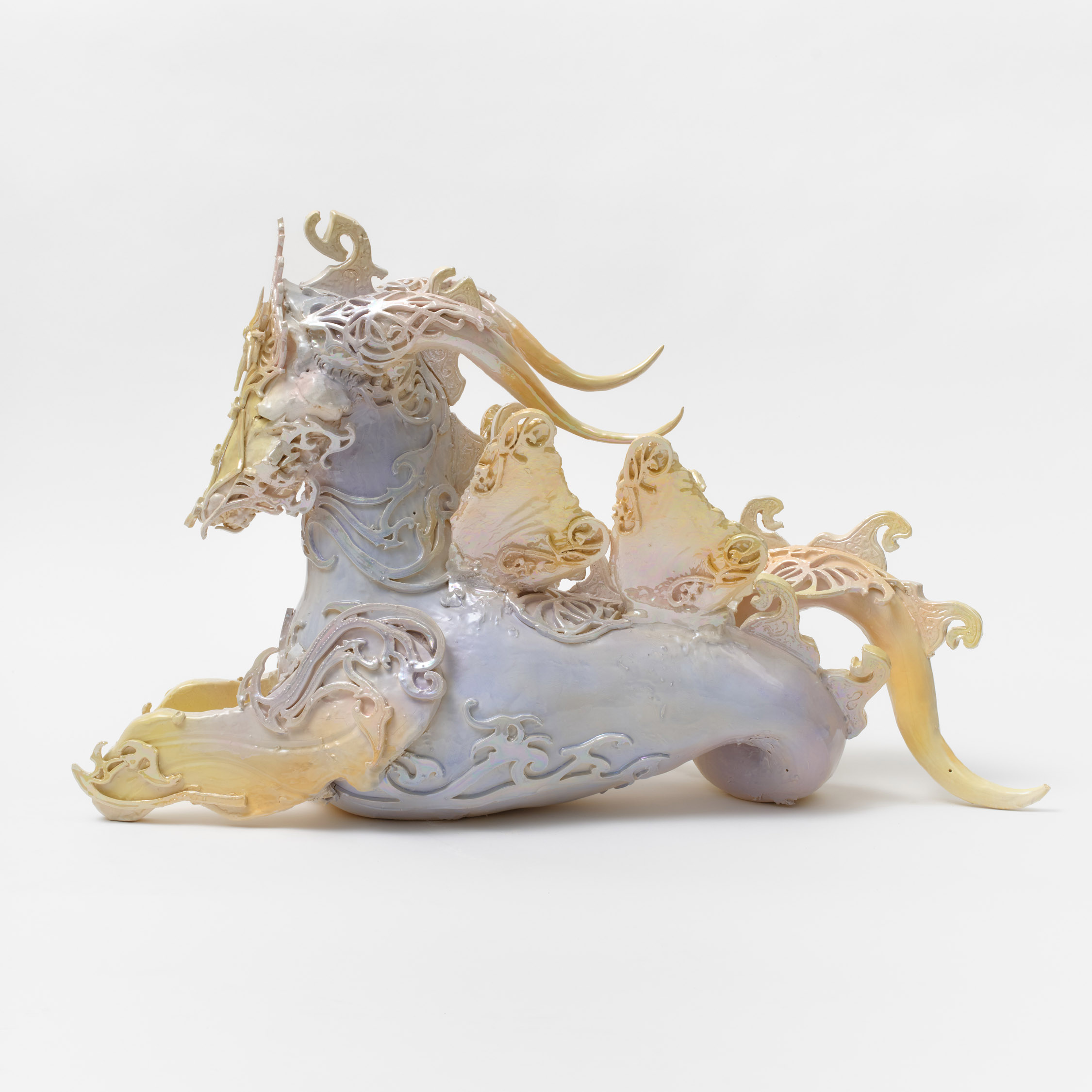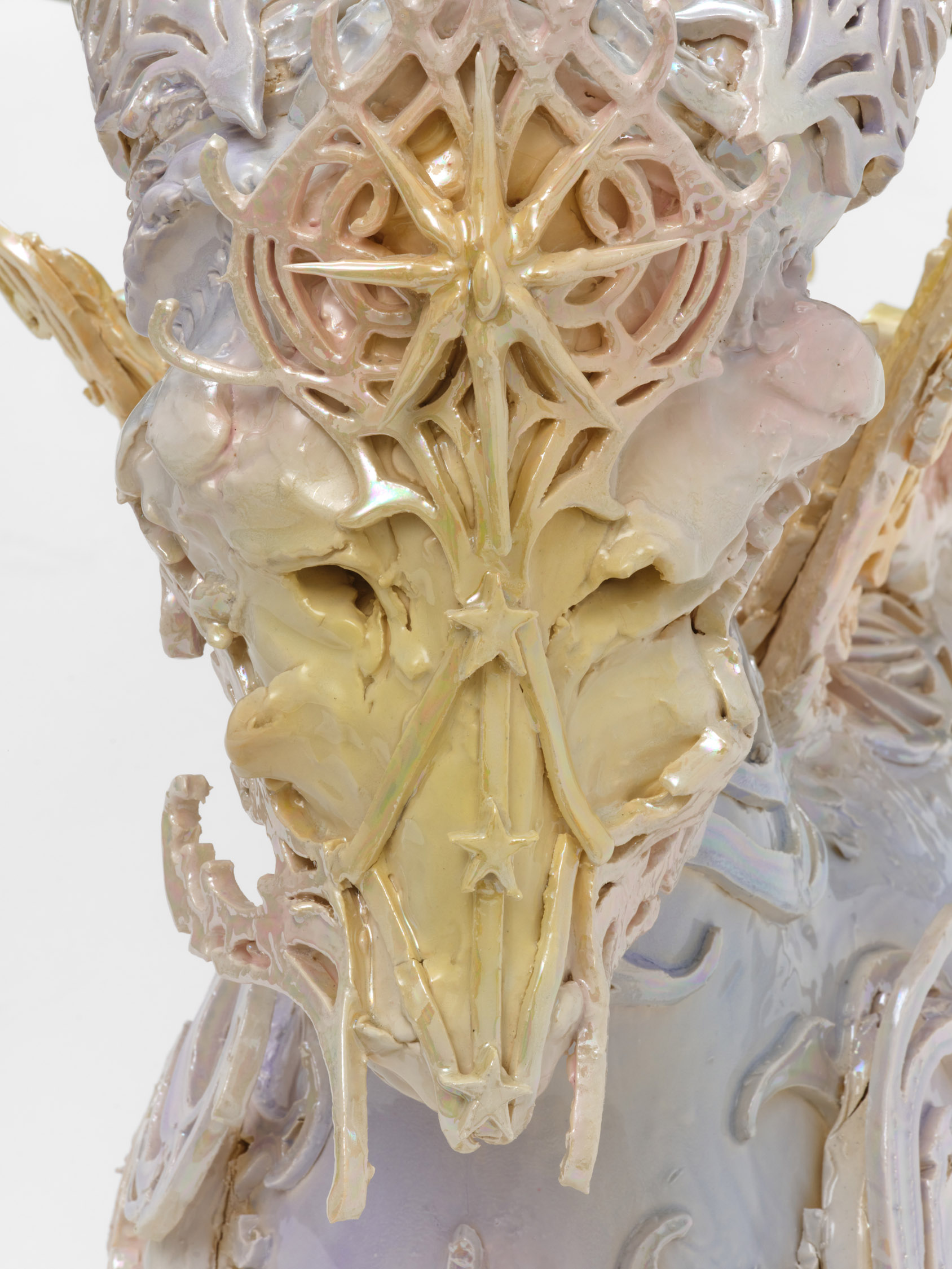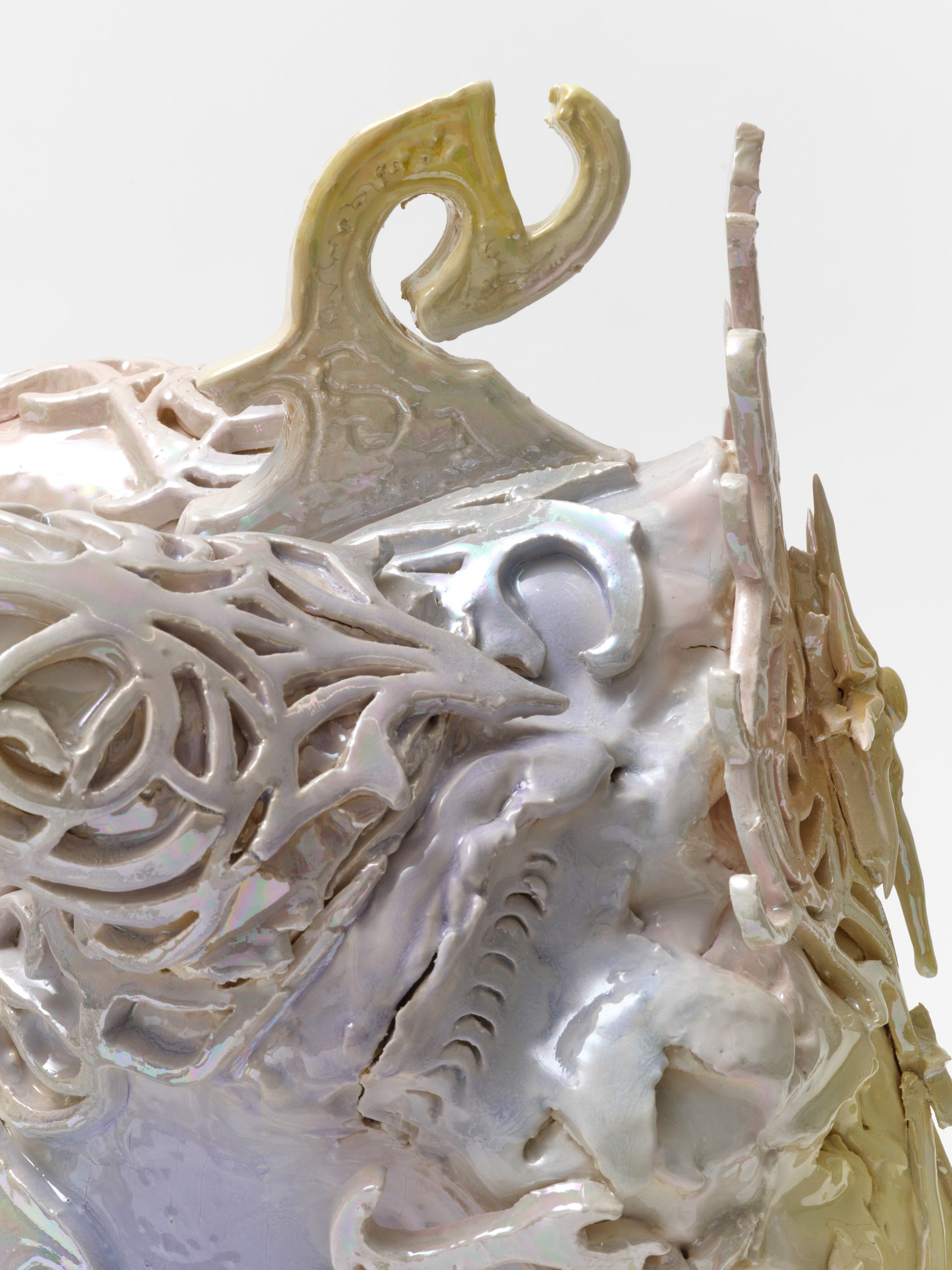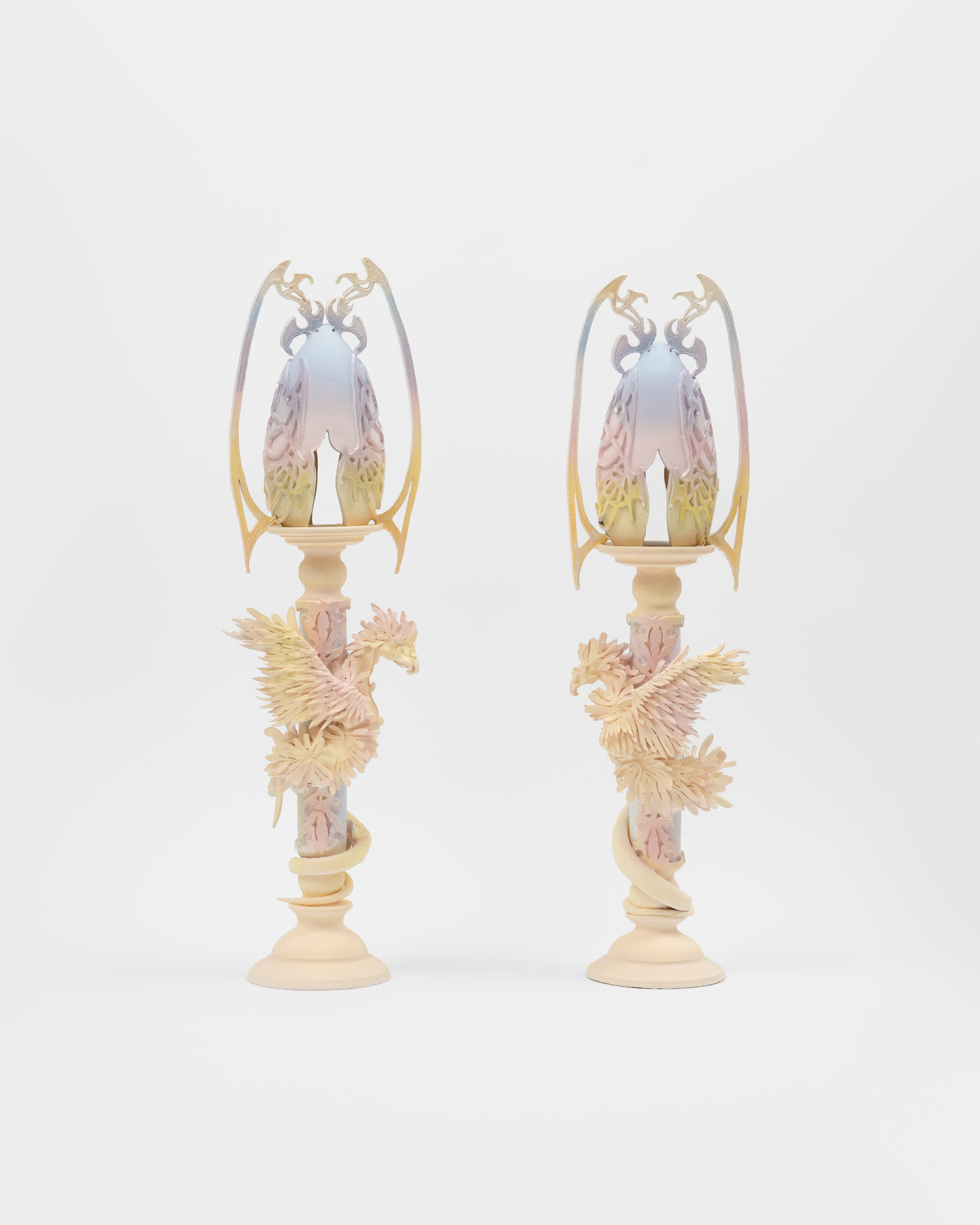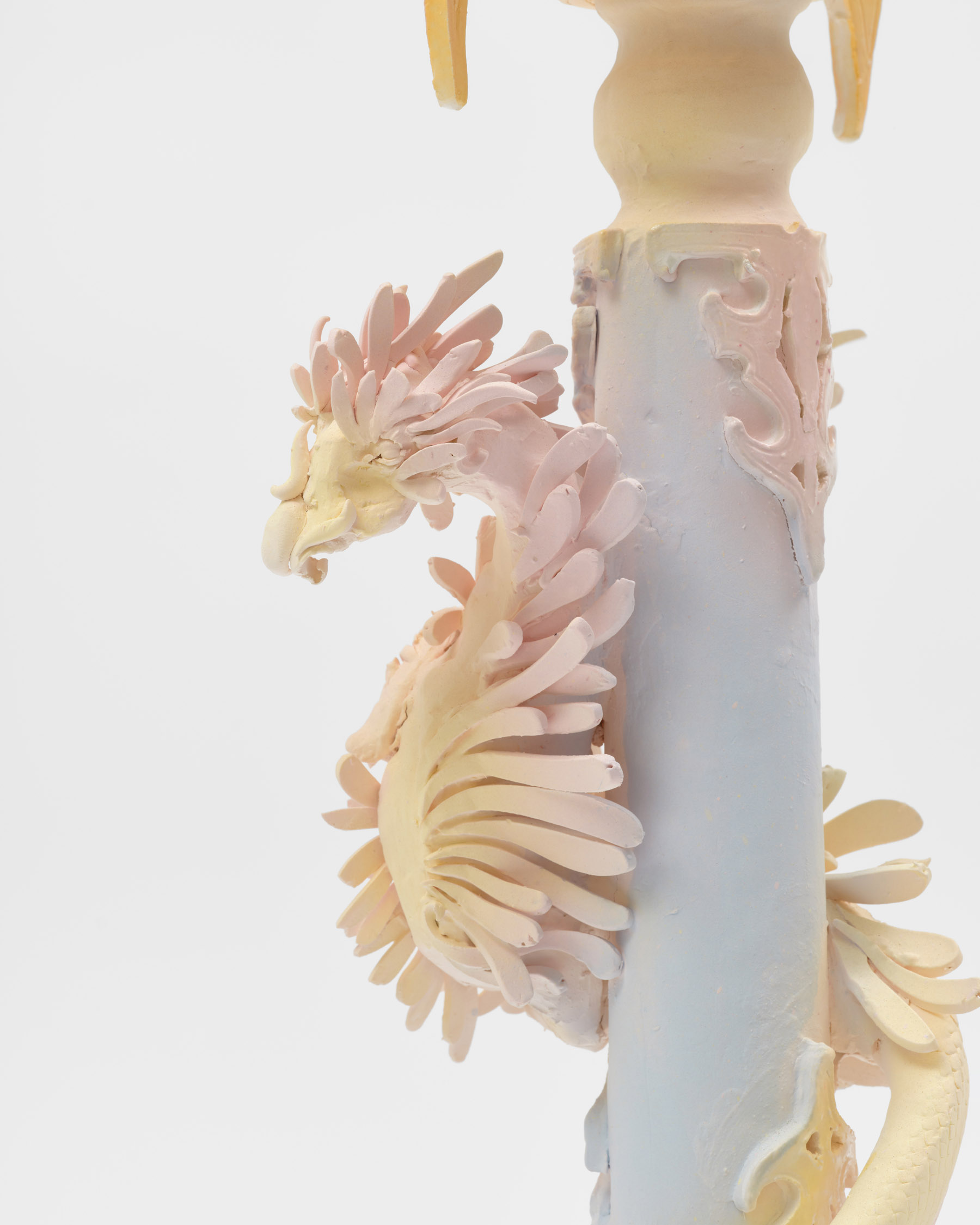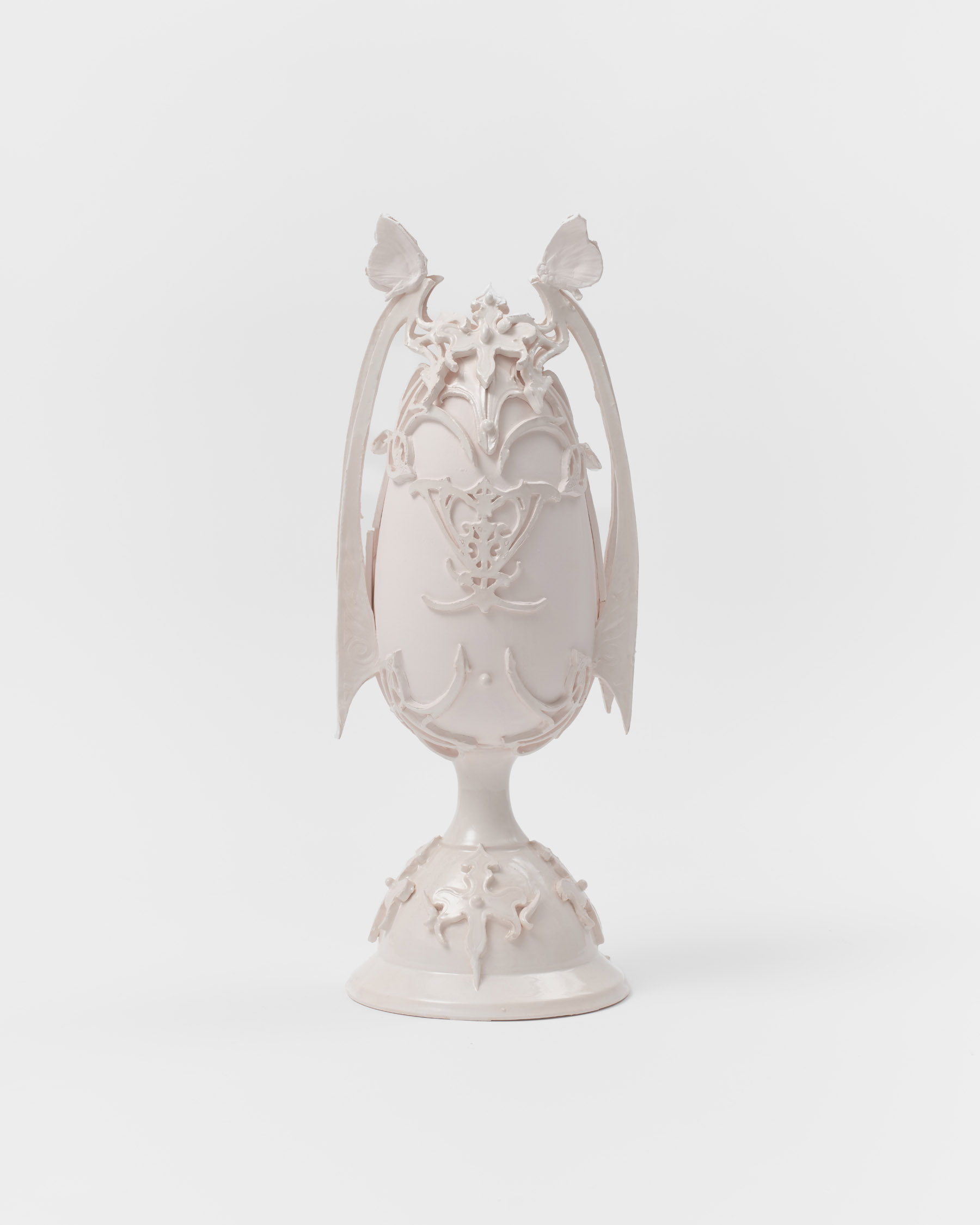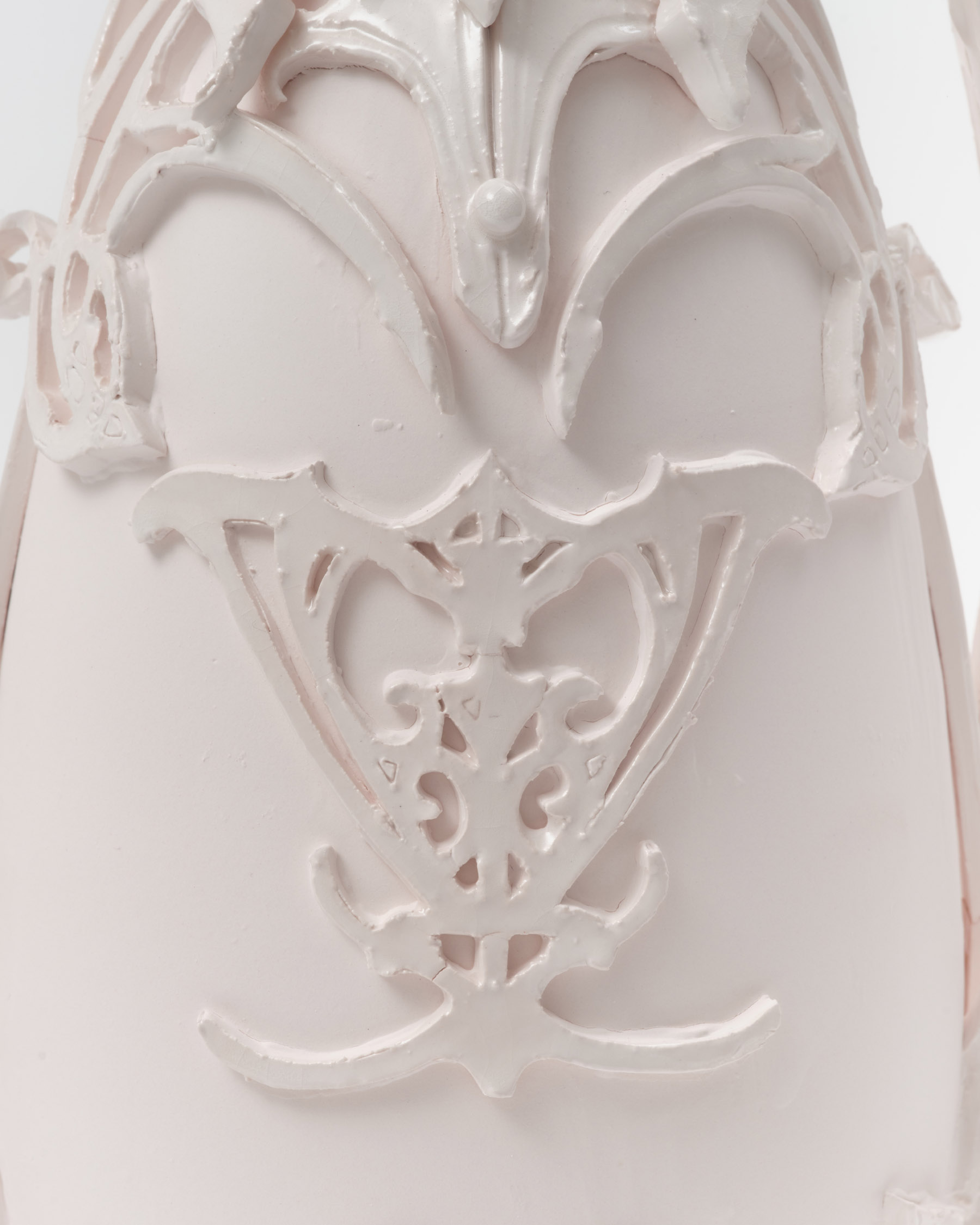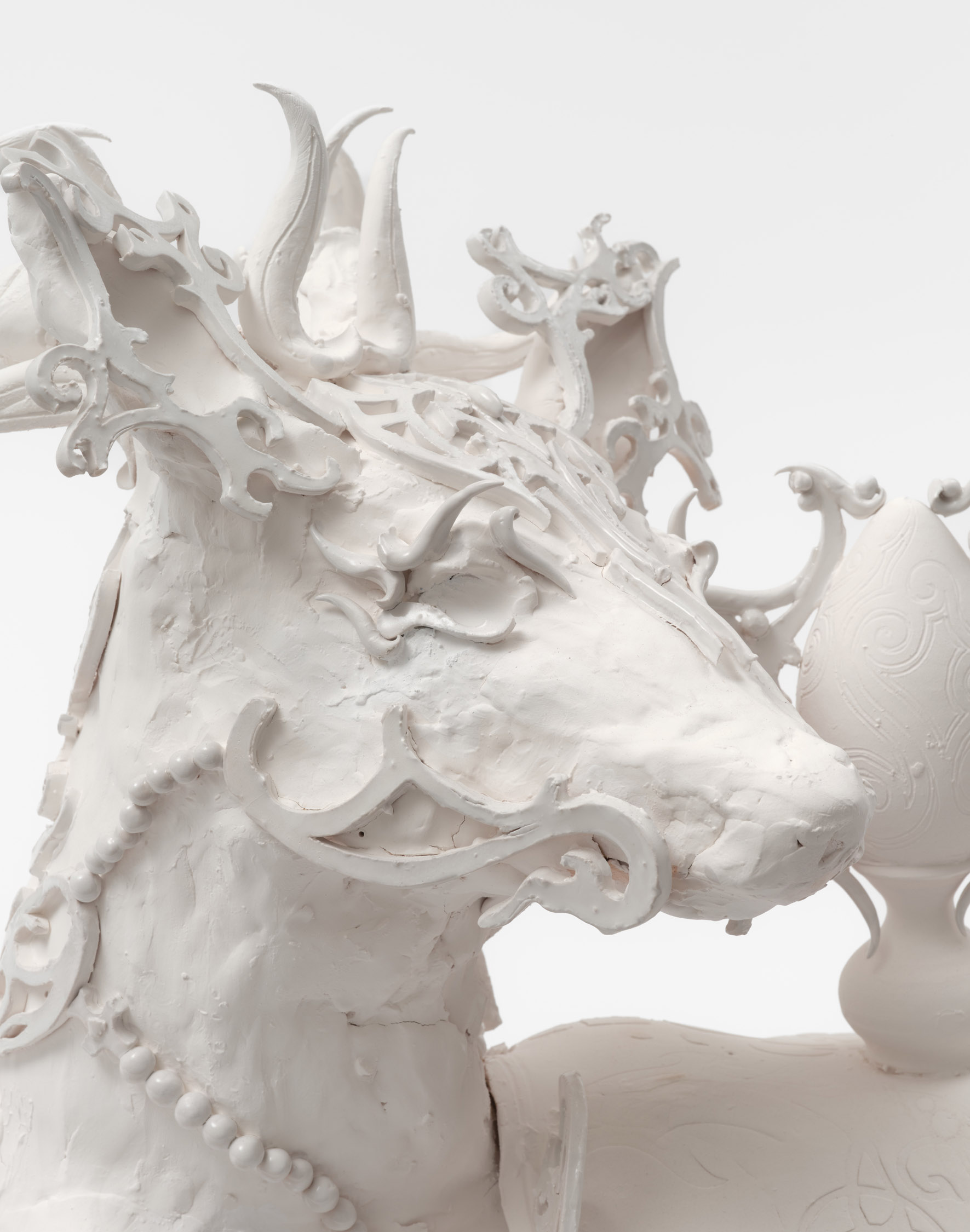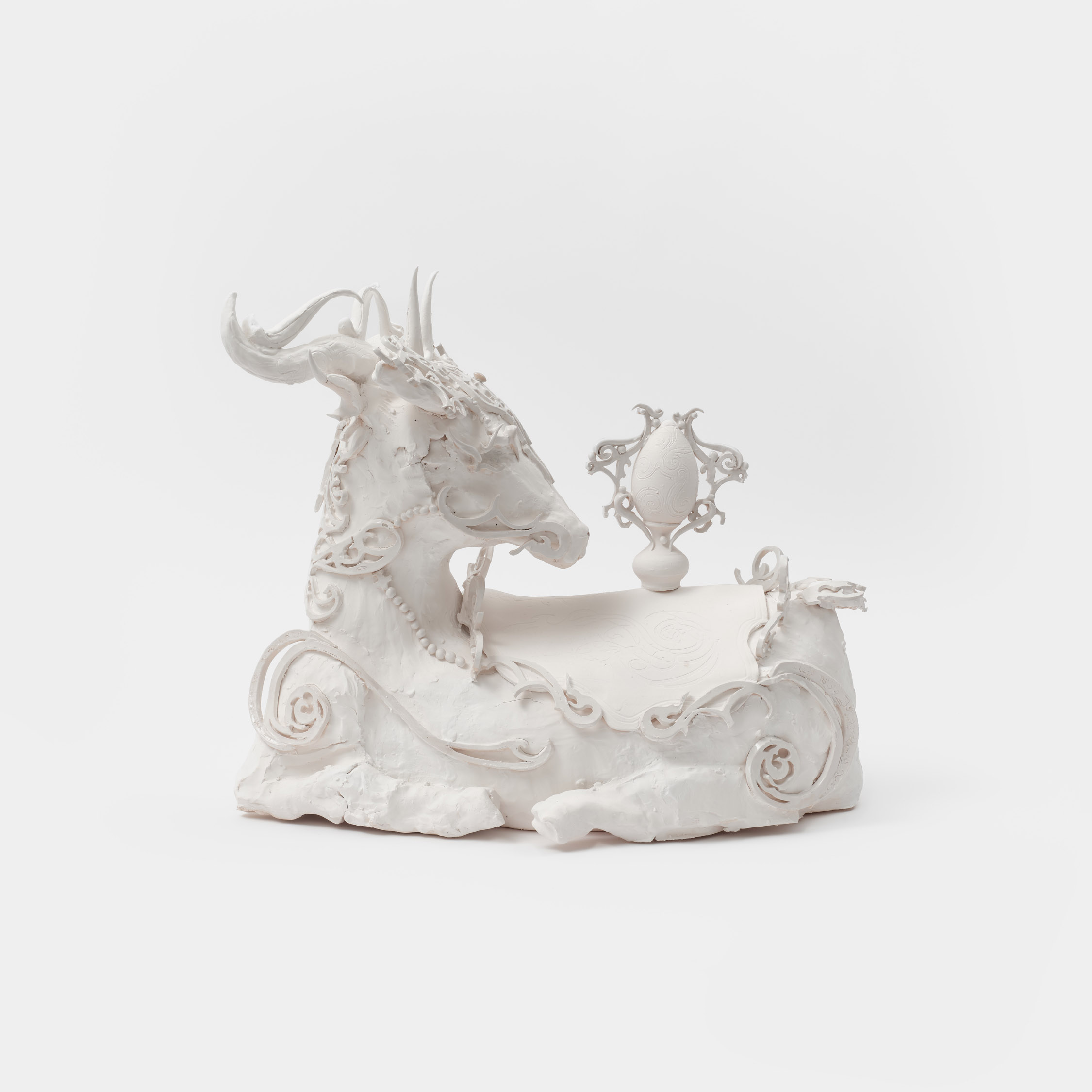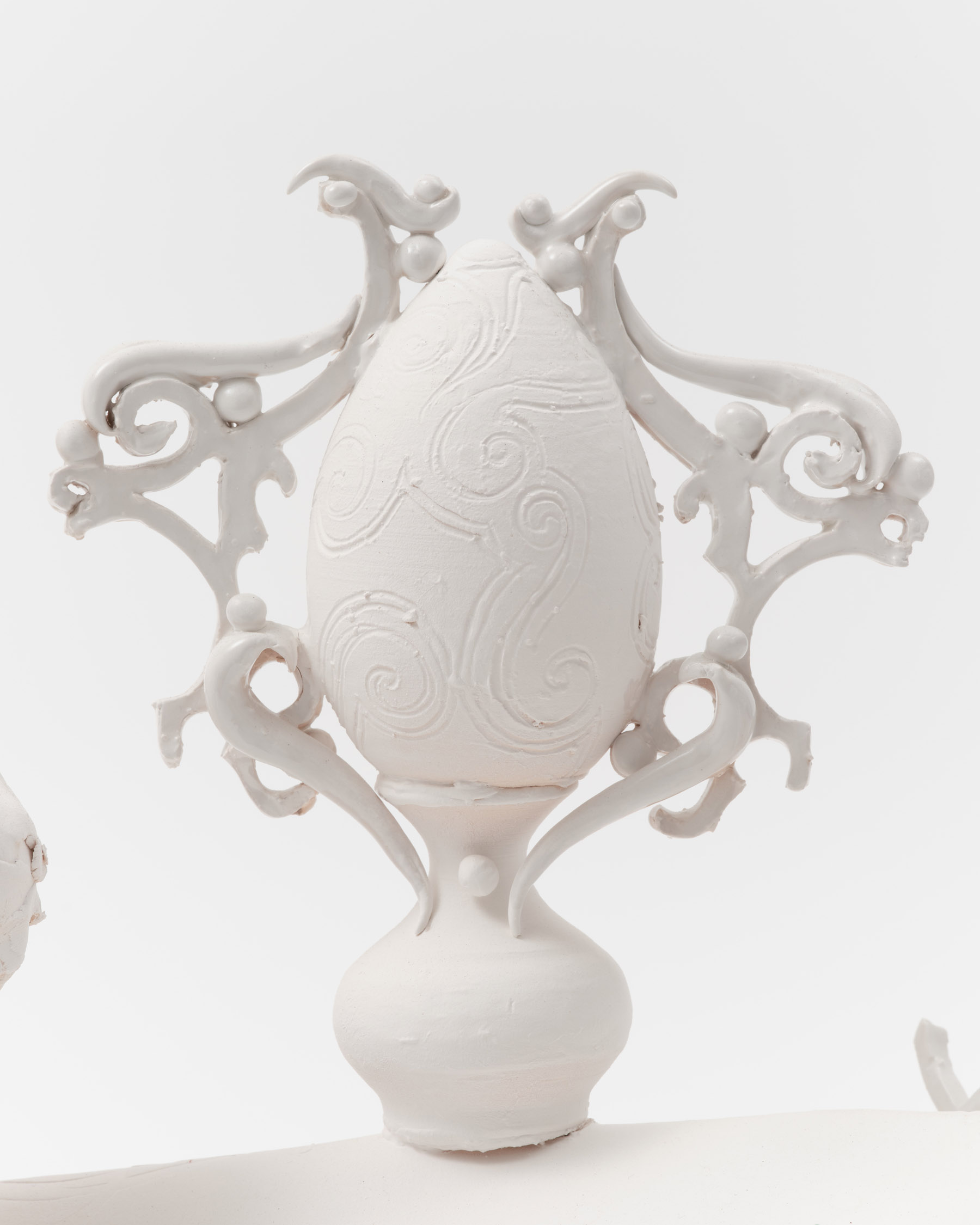Artist: Evangeline AdaLioryn
Exhibition title: Her Labyrinth
Venue: Sebastian Gladstone, Los Angeles, US
Date: March 30 – April 27, 2024
Photography: images copyright and courtesy of the artist and Sebastian Gladstone, Los Angeles
In the shadow of a total eclipse, the artist relies on echolocation to place herself. The sun has disappeared and the world grows colder, yet the darkness is circumscribed by a ring of light. For years, Evangeline AdaLioryn describes feeling as though she was “arriving at a banquet alone and seeing people dance together in different ways, in different lives.” Alienation from certain normative life experiences and sorrow over what was denied them in youth are common feelings among many trans women. The work presented in Her Labyrinth, the opening of which coincides with a solar eclipse, is meant to protect and celebrate the “walking echo” of the artist’s lost girlhood. AdaLioryn has set up this space as a banquet-cum-shrine. The moon moves away from the sun. It is a kind of dawn.
A procession of blind animals act as guides through Her Labyrinth. Arranged in pairs, each animal listens and waits while guarding its twin. Wrapped in intricate sigils, they are imbued with divine protection. Vessels, a recurring motif in AdaLioryn’s work, appear here as a series of ritual-objects like candle holders and incense burners. The sigils seen in this collection are vessels too, repositories of memories that cannot be contained in language. Just as an eclipse must not be directly looked at for the threat of burning eyes, certain memories, radiant and dark, can only be invoked by looking away from them. Animals and mythological creatures coexist in the procession; memory does not distinguish between fantasy and what really happened. We remember what happened. We remember what didn’t happen. We remember what we wished had happened. We remember what will never happen as though it already has. Her Labyrinth is a celebration of the artist discovering herself in the precipitation of an evaporated dream.
Gathering inspiration from early twentieth century Art Nouveau craft houses, AdaLioryn prioritized ornate and delicate beauty in her carefully developed symbolic language. Before rendering the sigils in three dimensions, she began each one as a hand drawn illustration, eschewing digital modeling in favor of the traditional method employed by Louis Tiffany and René Lalique. It was in this intimate early stage that the sigils were fortified with emotional memory and thus acquired their unique power.
Iridescent pastels resemble sunrises over water, or the multicolored Favrile glass pioneered by Tiffany Studios. Soft, light, or even fading, the colors appear as a permanent haze surrounding each piece. “In my sadness, it’s a fight to bring any color to my work at all,” she says. Like private prayers, the colors are whispered though the will behind them is resolute. The formal beauty displayed in the sigils’ complex symmetry and the animals’ dreamy colors stands in triumphant opposition to feelings of defeat and isolation. The elegance of these pieces derives, in part, from their delicate containment of these kinetic emotional tensions.
Here, the human form is abstracted but not absent. Instead of being represented as the material outline of a body, the arrangement of animals, vessels, and other objects constellates into a map of a young woman’s psyche. Throughout the collection appear two hippocampuses, a creature from Greek mythology that is half horse and half fish, after which the part of the brain responsible for memory is named due to its physical resemblance with a seahorse. The biological function of memory is reconfigured as literal myth. This inversion of representation from the rational to fantastic contests the impossibility of ‘lost time’, allowing for an unlived past to be redeemed by imagination. The sigils are also a psychic musical score. When their shapes are drawn on paper and performed, the sound created is the echo of an unspoken thought. Echolocation reveals the boundaries of an inner world as the artist searches for lost memories inside it. A hymn as well as elegy as well as aubade, the silent song guides her to the center of herself. Possibility is reflected off of the future and into the past.
The difference between a labyrinth and a maze is that a maze is full of false ends while a labyrinth leads each entrant to a fated center. Though twisted and confusing, the pathway of a labyrinth is singular; there is only one way through. A maze misleads. The difference between a labyrinth and a maze is the difference between honesty and deception. The journey through Her Labyrinth terminates in the discovery of oneself and, in the celebration of this discovery, healing contact with a phantom past.
– Amber Later
I am honored to thank the following people who made this project possible: Long Beach State University, Ceramics Artist Residency, Chris Miles, Tony Marsh, Grace Ha, Ish Rivera, Andrew Grainer, Adam Abraham, Elizabeth Scott, Emilia Perez, and Jon Weisenburg.
To anyone who is in their own Labyrinth, it’s said that if you can look up and see the Stars, they will tell you how to get through safely. To everyone else who has helped me navigate these past years of becoming, thank you for being the stars that guided me here.
– Evangeline AdaLioryn
